Sustainable Safari
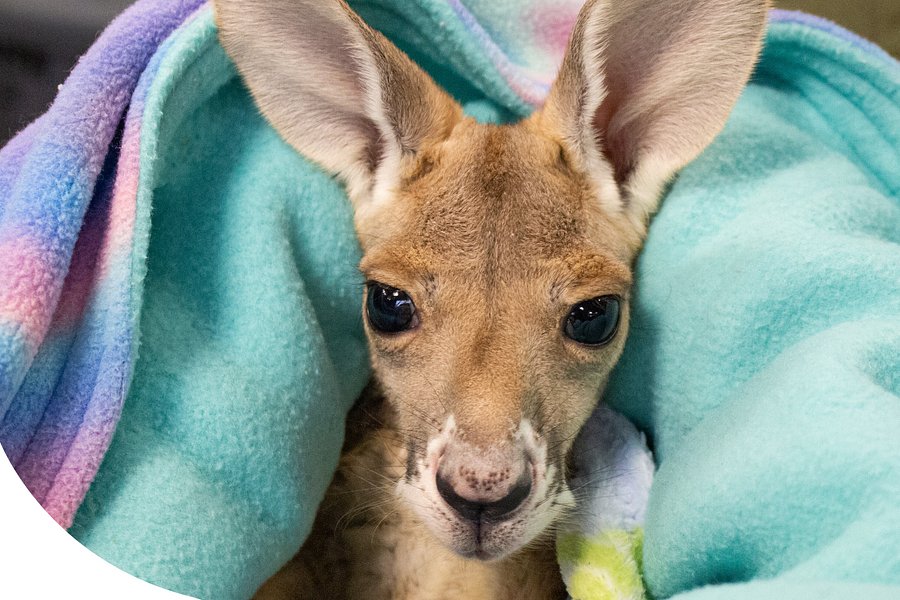

Top ways to experience nearby attractions

Most Recent: Reviews ordered by most recent publish date in descending order.
Detailed Reviews: Reviews ordered by recency and descriptiveness of user-identified themes such as waiting time, length of visit, general tips, and location information.
Sustainable Safari - All You Need to Know BEFORE You Go (2024) - Tripadvisor
- Sun - Sun 12:00 PM - 6:00 PM
- Mon - Sat 11:00 AM - 7:00 PM
- (0.75 km) Emerald Inn
- (12.24 km) Historic District BnB
- (6.76 km) Best Western Plus White Bear Country Inn
- (11.10 km) The Saint Paul Hotel
- (10.70 km) Celeste St Paul
- (0.05 km) Sweet & Sour Taqueria
- (0.05 km) Charleys Cheesesteaks
- (0.11 km) Cinnabon
- (0.10 km) Charley's Grilled Subs
- (0.10 km) Panda Express
- (0.08 km) Tactical Escape 101- Maplewood Mall
- (0.52 km) Myth
- (0.10 km) JCPenney
- (0.10 km) At The Pier Arcade
- (0.16 km) Kohl's
eGift Cards 🔗
Shop Online
Take a journey into Sustainable Safari®! Located at the Maplewood Mall, we have 200+ animals to feed and interact with. Book a private tour!
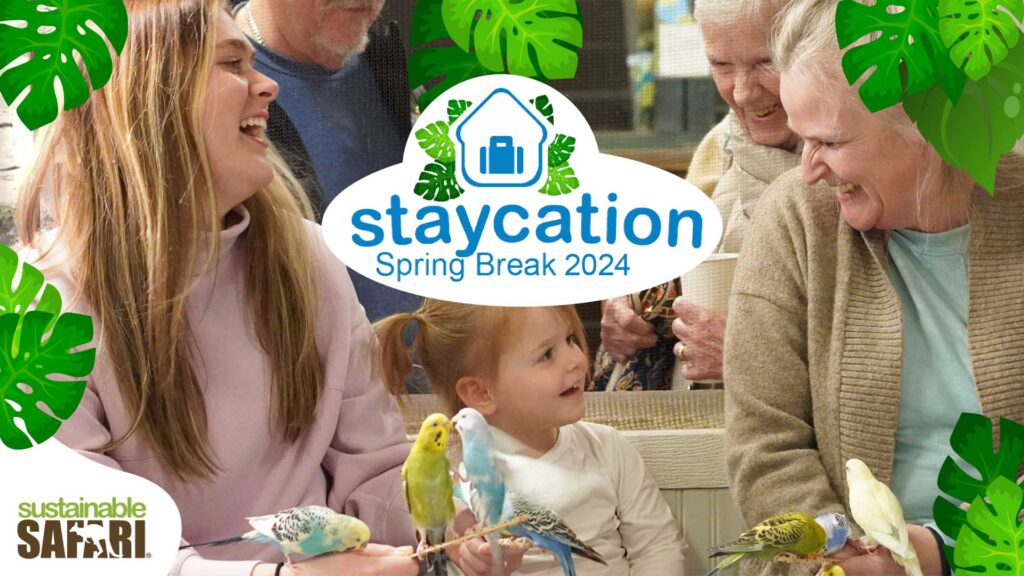

What is there to do at Sustainable Safari ® ?
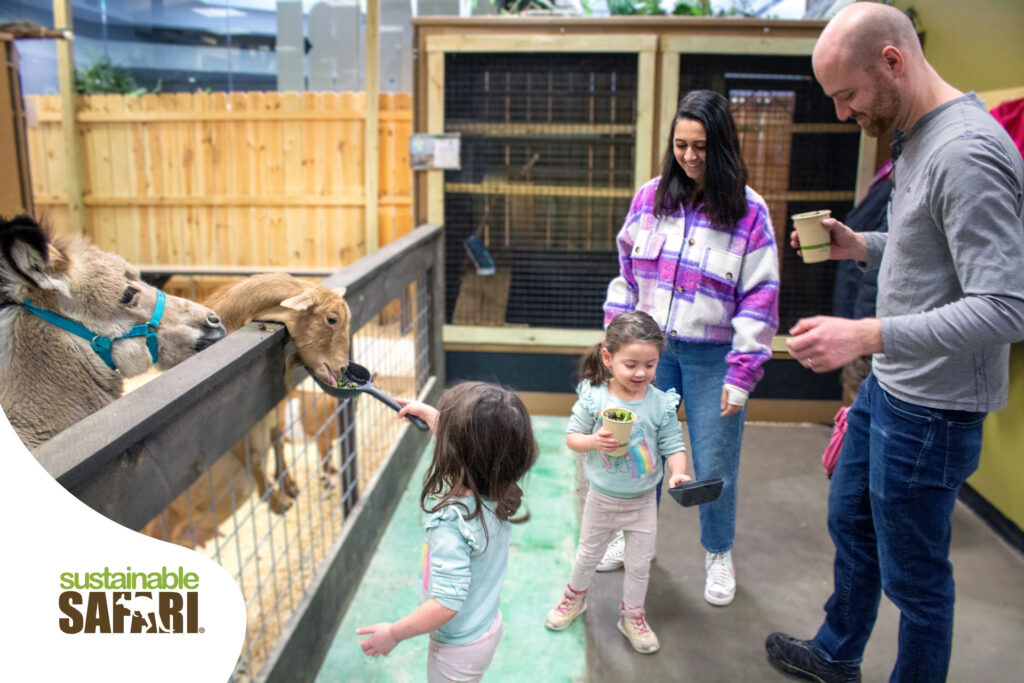
STEP 1: Start Your Safari!
Admission: Adult: $16.50 | Child: $16.50 Ages 4 and under are free.
Hours: Monday–Saturday : 11 am–7 pm Sunday : 12 pm–6 pm
No reservations are required for general admission. Purchase tickets at the door.
Included with Admission:
- Guests can view and interact with most animal species with general admission.
- Tickets include ALL-DAY admission. We will stamp your hand for easy re-entry!
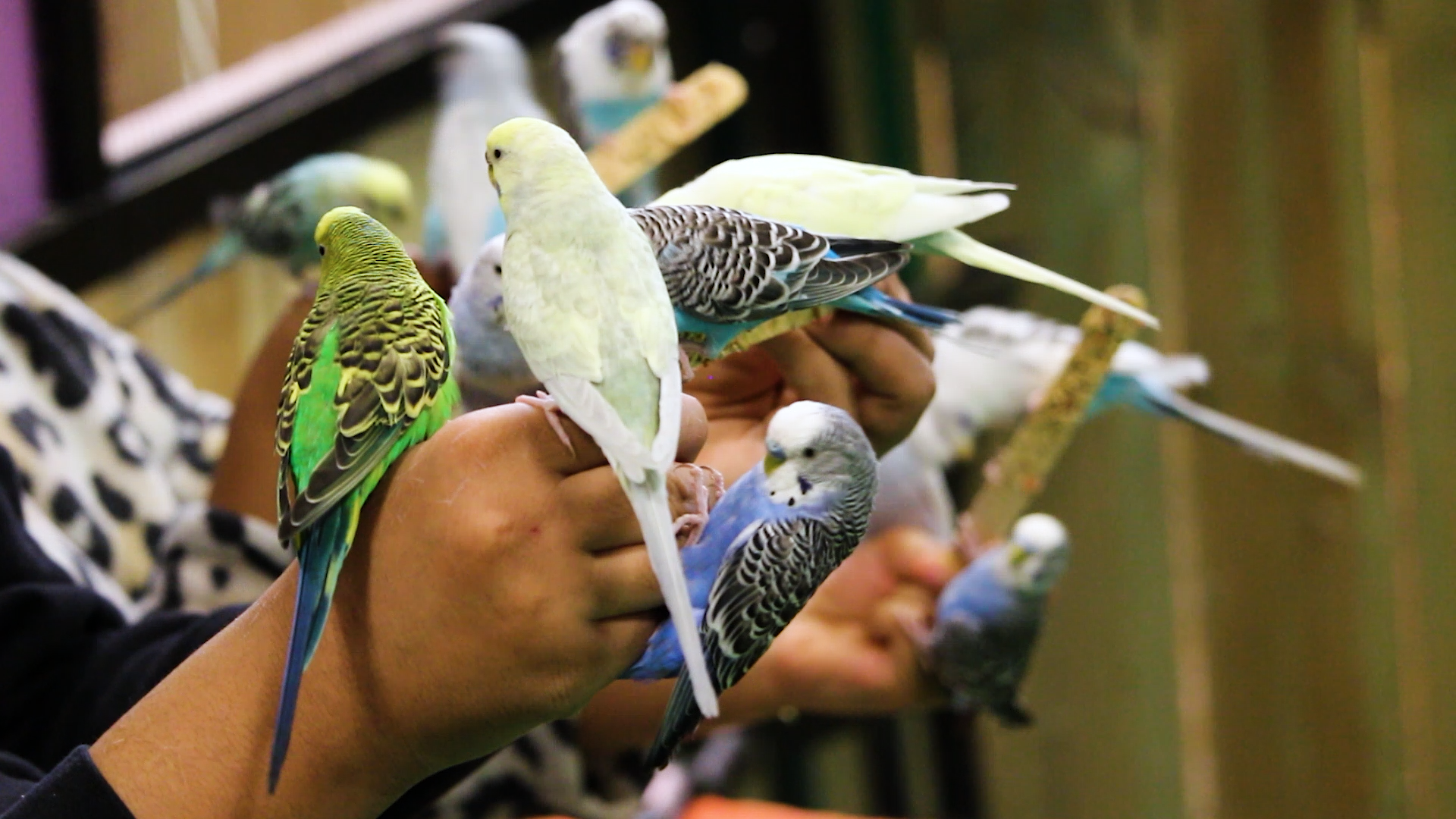
Extras to do at Sustainable Safari ® !
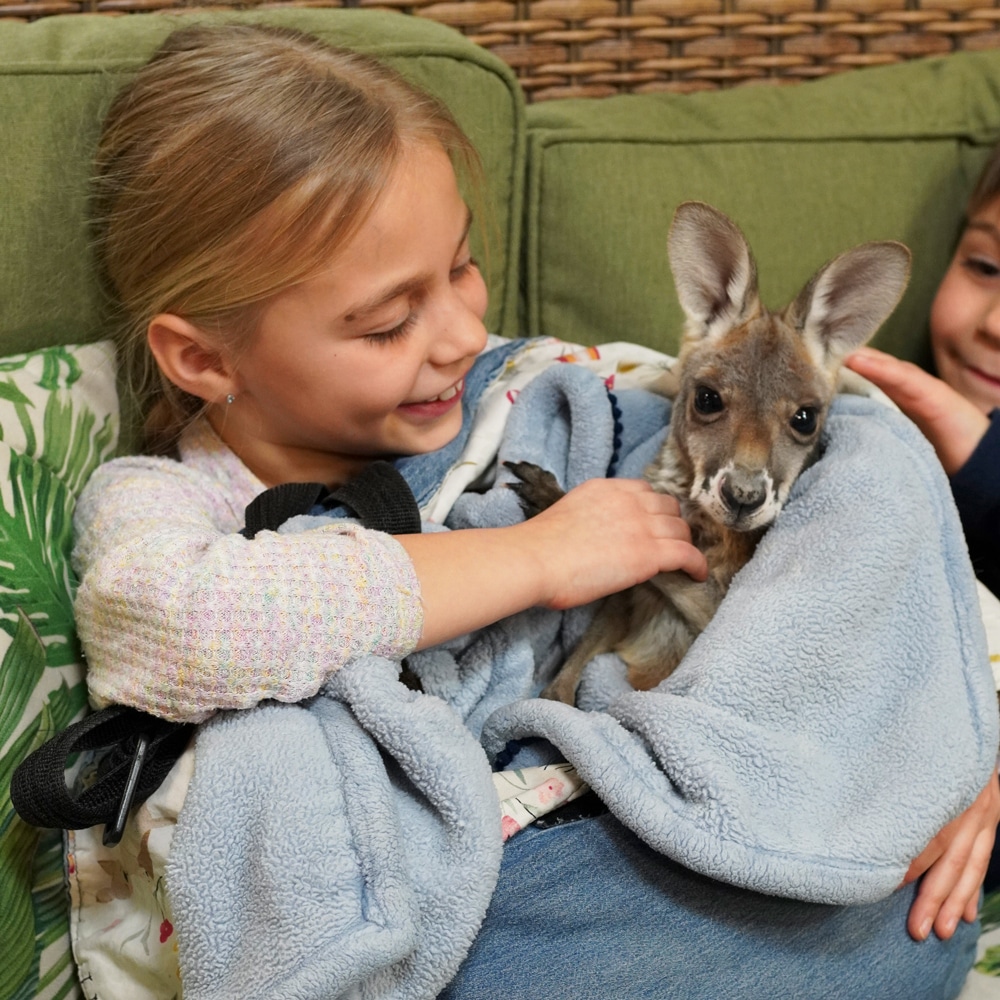
STEP 2: Animal Interactions
Available Animal Interactions Holdings Feedings Experiences

For all experiences and feedings that bring you into the animal’s exhibit, closed shoes are required . (No open-toed shoes, sandals, flip-flops, or crocs. )
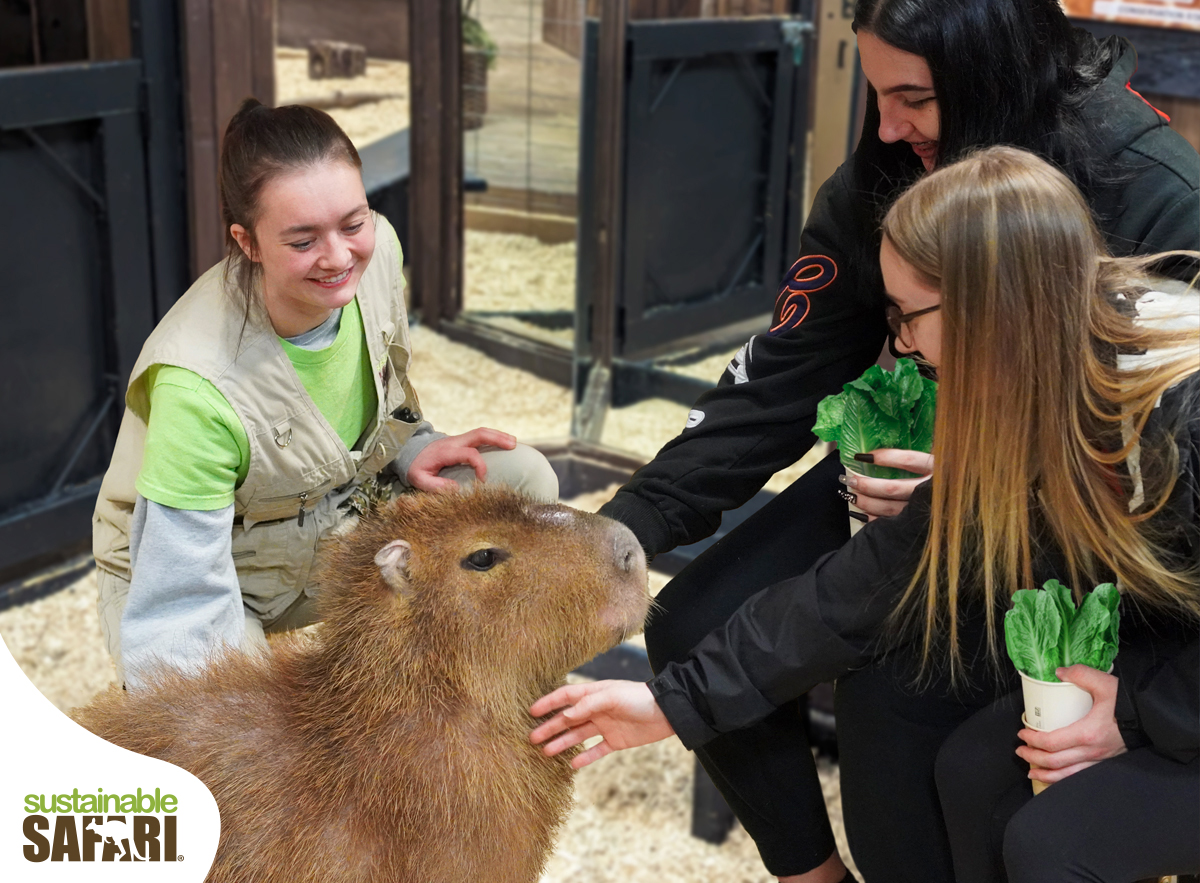
Seeking fun for the whole family?
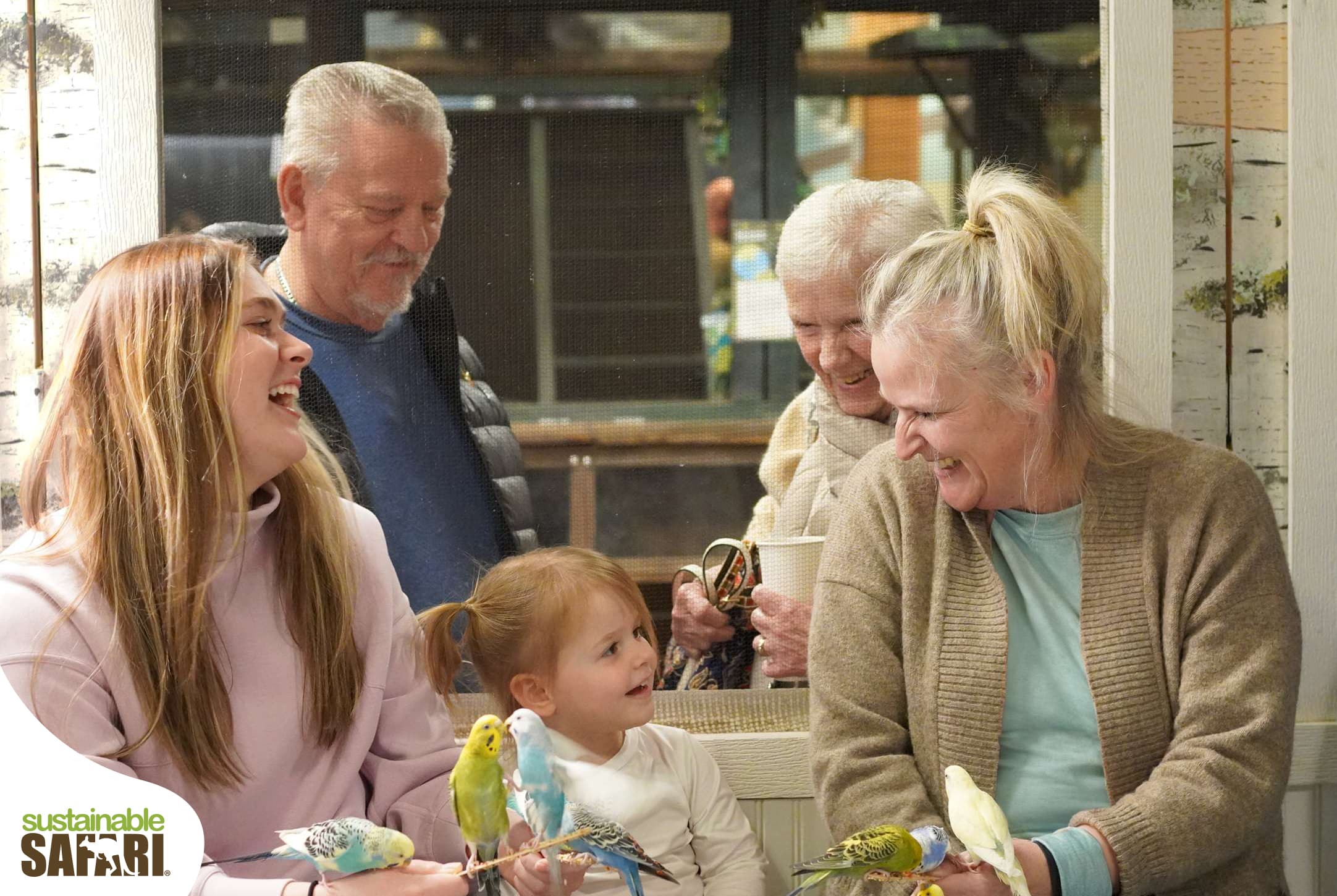
STEP 3: Pouch Packages
Explore the Safari at your own pace with multiple “extras” or animal interaction tokens for the whole family!
$25-$130 (+Admission) Per person. (Ages 5+)
No reservations are required . Purchase Pouch Packages with admission.

Do you want a private tour of the Safari?
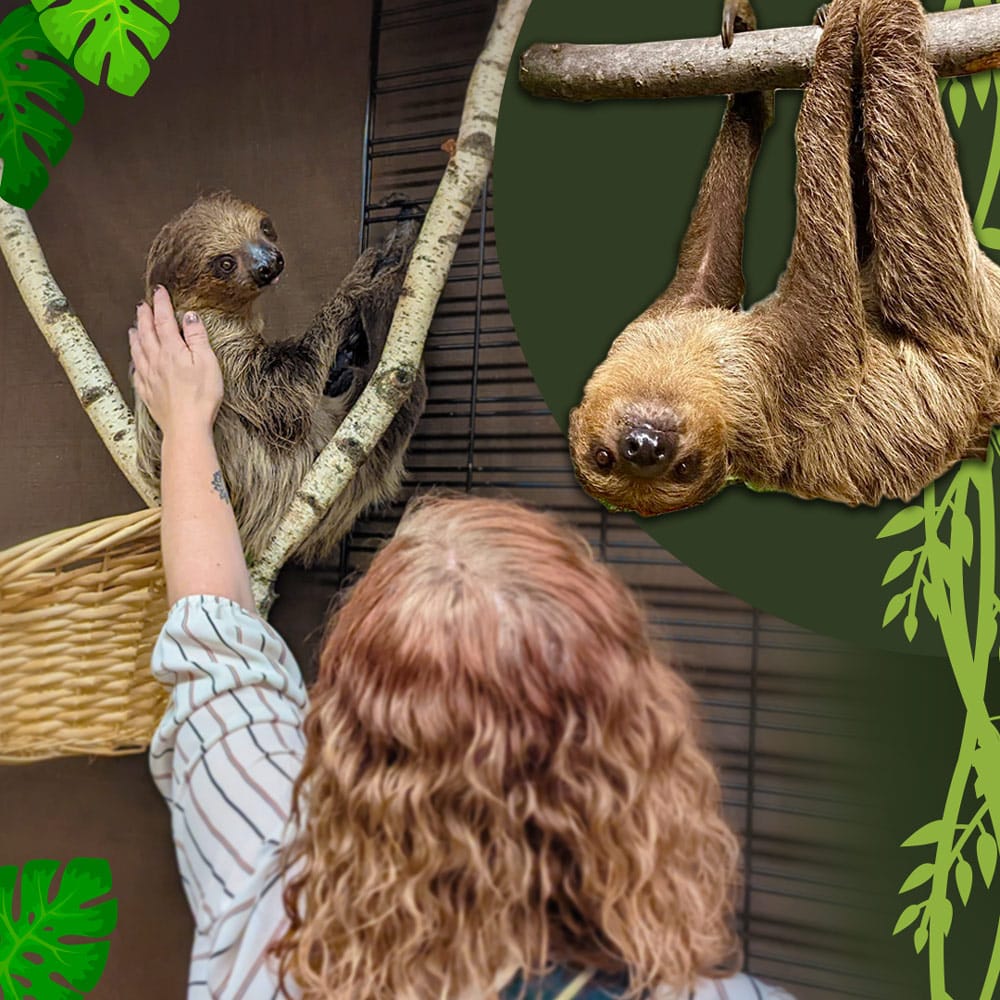
STEP 4: Guided Safari Tour
Do you want the whole Safari experience? Spend 90 minutes behind the scenes of the Safari with a professional Safari Guide! Specialized feedings, interactions, holdings, and exclusives.
$180 (+Admission) Per person

No reservations are required for general admission. Purchase your tickets at the door.
Safari Reviews
Reviews below are from the Sustainable Safari® Google Business profile! More Google Reviews >
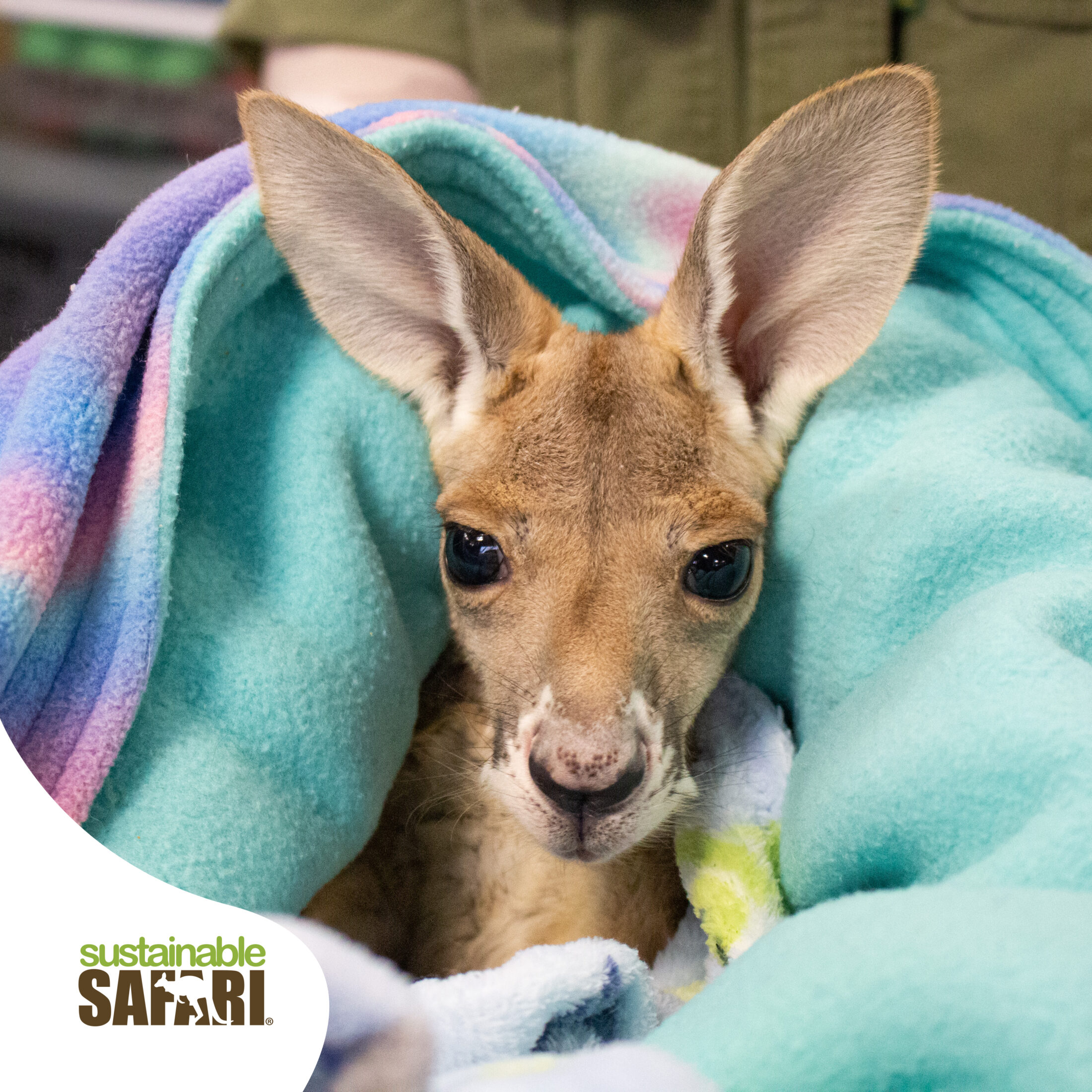
“Incredible experience!! For $16 a person we weren’t expecting much but holy cow they have a bajillion animals and they are all so friendly! Experiences are pretty affordable as well. We got to go into the Guinea pig enclosure and hand feed them for $5 each! Will definitely be back for the capybara experience and alligator feeding! We went Sunday afternoon and it wasn’t even that busy!” Doug O.
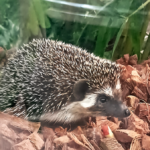
“Had a great time today! My youngest daughter held a snake and my middle daughter held a kangaroo! So much fun! Well definitely be back!” Stacy E.
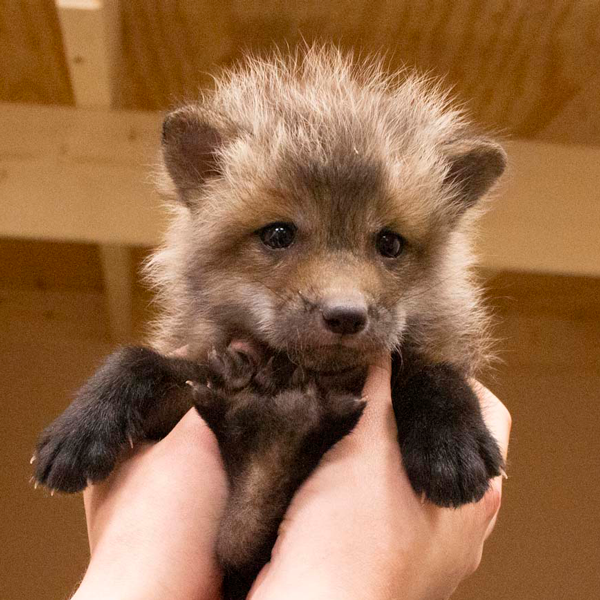
“Thank you SO much! We had a blast and had to force ourselves to not come back and spend the whole day there today. Your animals are the healthiest, happiest and most loved animals we have ever seen. I have traveled with my kids to 49/50 states and we have never seen anything like what you offer here. The attention to detail, the cleanliness, the happy and friendly employees. I have told so many people about your place and will continue to do so. Thank you for the unforgettable experience, and please keep doing what you’re doing, it’s perfect!” Alexis S.
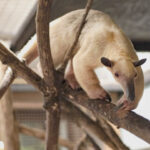
“This was a super cute place for our family to visit. We took our 2 year old, and had a blast. The layout is fairly open, so you can move between exhibits and stay as long (or short) as you’d like. You can also get a stamp of you need to exit so that you can return later.” Dawn M.
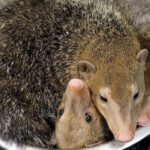
“This place was so clean and well kept! The staff were very friendly and helpful and the experience was one like none other! Highly recommend! What an experience! Thank you for the wonderful time!” Katrina L.
More Google Reviews >
Frequently Asked Questions
Sustainable Safari’s most frequently asked questions. Click on the arrow to see the answer to each question.
Adult – $ 16.50 Child – $16.50
All paid-entry receive:
- ALL DAY Safari Entry FREE Same Day Re-entry
- Includes $2.00 Feed Cup
- Kids 4 & Under FREE
- $2.00 OFF : Seniors, Military, First Responders, Educators *Must bring official ID
Safari Hours: Sunday 12 pm-6 pm Monday 11 am-7 pm Tuesday 11 am-7 pm Wednesday 11 am-7 pm Thursday 11 am-7 pm Friday 11 am-7 pm Saturday 11 am-7 pm
We are closed on the following federal holidays so our animals and employees can enjoy their time off with their families. Easter Sunday, 4th of July, Thanksgiving Day, Christmas Eve, Christmas Day, and New Year’s Day.
Nope! Reservations are not required for general admission . If you wish to take a Guided Safari Tour, you can make a reservation by booking online or in-store. You can also contact us about birthday parties and more!
Sustainable Safari® is located inside Maplewood Mall on the second floor at the Southwest end of the Mall. Park in Kohl’s upper-level parking lot and enter Maplewood Mall door #2.
Sustainable Safari® Maplewood Mall 3001 White Bear Avenue N, Maplewood, MN 55109
Each animal experience has a variable length of time. Holdings last 3-4 minutes.
Anywhere from one hour to four hours or all day. The Safari is entirely self-guided; it depends on how much time you spend at each animal exhibit. With dozens of species to view and interact with, plan at least a few hours of your day around the Safari to receive the entire experience. We stamp your hand for easy re-entry. All paid admission includes an all-day pass!
Yes! The capybara is always available to feed, pet, and interact with at Sustainable Safari. Multiple families are rotated from our farm to the Safari.
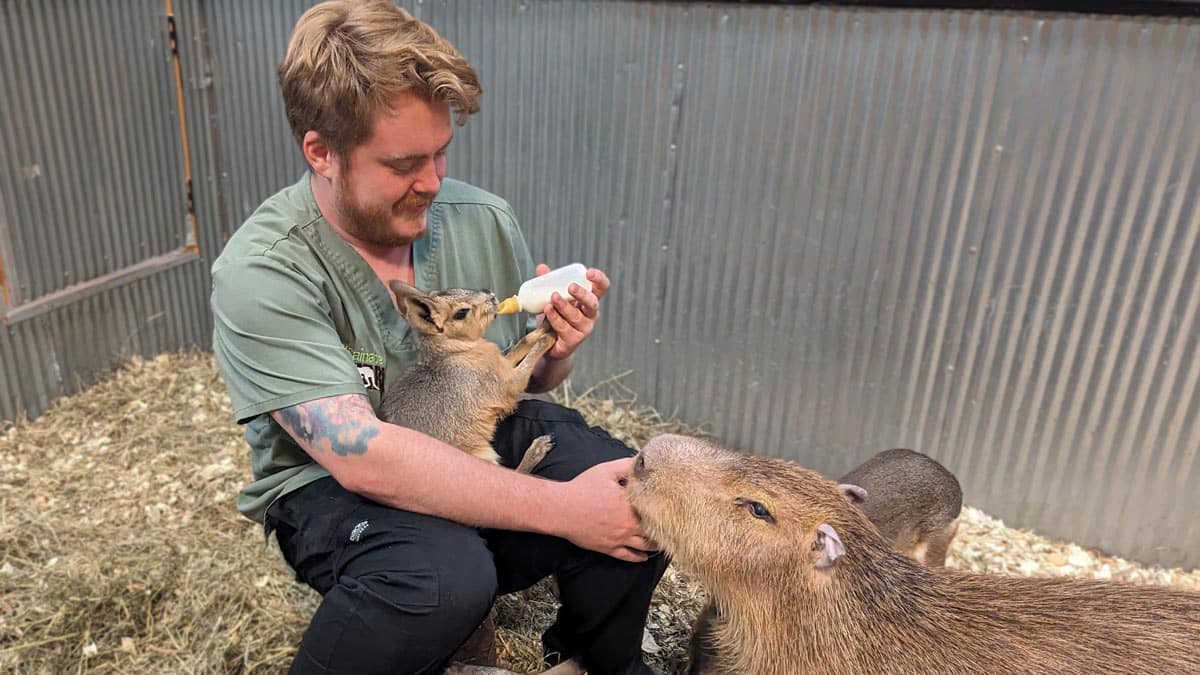
Sustainable Safari ®
Give us a call.
Get FREE Admission on your birthday!
Get a FREE Birthday Day Pass the week of your birthday! The email to enter your birthday will be sent within 24 hours.

Sustainable Safari

Top ways to experience nearby attractions

Most Recent: Reviews ordered by most recent publish date in descending order.
Detailed Reviews: Reviews ordered by recency and descriptiveness of user-identified themes such as wait time, length of visit, general tips, and location information.
SUSTAINABLE SAFARI: All You Need to Know BEFORE You Go (with Photos)
- Sun - Sun 12:00 PM - 6:00 PM
- Mon - Sat 11:00 AM - 7:00 PM
- (0.75 km) Emerald Inn
- (12.24 km) Historic District BnB
- (6.76 km) Best Western Plus White Bear Country Inn
- (11.10 km) The Saint Paul Hotel
- (10.70 km) Celeste St Paul
- (0.05 km) Sweet & Sour Taqueria
- (0.05 km) Charleys Cheesesteaks
- (0.11 km) Cinnabon
- (0.10 km) Charley's Grilled Subs
- (0.10 km) Panda Express
- (0.08 km) Tactical Escape 101- Maplewood Mall
- (0.52 km) Myth
- (0.10 km) JCPenney
- (0.10 km) At The Pier Arcade
- (0.16 km) Kohl's

Twin Cities Frugal Mom
Living well and centsibly in the Minneapolis/St. Paul area
So Many Animals! Our Wild Adventure at Sustainable Safari in Maplewood
April 7, 2022 By TC Frugal Mom

So many animals!!!!
That’s what we thought when we visited Sustainable Safari in Maplewood for the first time this past week. We could have spent all day here with the animals! There were so many!
And many animals were soooo cute. Like the baby goat that “baaaa’d” so sweet. And the baby kangaroo that actually wore a diaper (heehee). And the otters that made the cutest squeaks as they climbed all over us.
Sustainable Safari is an interactive animal experience in Maplewood Mall. It opened up 2 years ago and this was our first time here. It’s truly a unique experience here in Minnesota as nothing else offers an up-close and interactive experience with animals from around the world. You can feed or hold almost all animals including red kangaroos, fennec foxes, and alligators!
We were invited to visit and share our experience on my blog, and I’m so glad we finally went! I had no idea what to expect but it was seriously hours and hours of fun. We were there almost 3 hours and could have spent many more here! It was a wild adventure but safely indoors so it’s perfect for year-round fun.

They have over 200 animals to feed and pet. Admission is $16.50 and includes a $2.00 feed cup and ALL-DAY Safari entry. Kids 4 and under are FREE! (Seniors, military, first responders and educators get $2.00 off.)
They also have other experiences you can add on – where you can interact more with the animals. Or you can do the whole “Guided Safari Tour” where you get all possible interactive experiences with the animals!!!! You get tokens to exchange for an experience with each type of animal. (Note that there is a minimum age requirement for some experiences – kids have to be at least age 5 or 10 for some.)

We just started all brave by interacting with the alligator!
My kids were a little shy but I held it! It’s just a baby anyway… (Don’t worry, their staff stay nearby to help you!)

Next, on to the snake holding area!

My son held a pretty tame snake…carefully. We had a GREAT tour guide named Lynnea, by the way. She guided us through all the experiences and taught us so much!

I’m not sure I learned anything our tour guide was saying about the snakes though when I held one…I just tried to stay calm…

Okay, we had some good slimy fun. Now on to some kangaroo cuddling!!!

We got to hold a baby kangaroo, just like a baby! And the kangaroo wears a diaper, which the tour guide showed us.

And we got to pick out our own bay goat to bottle feed! This black one was soooo cute and made the cutest “baaa” sound, so we picked him.

As we sat with the kangaroo we had this view of the llama, goats and even chickens walking around!

Capybaras are animals you don’t think about often until you meet some! And yes, they look like rodents, because they are rodents! They are actually the largest rodents in the world. We fed them sweet potatoes and got to cuddle one!

We got to meet a Ring-tailed Lemur family! The boss is actually a female, so I like this family’s dynamics already…
These are very social animals from Madagascar and they loved the grapes and bananas we fed them.

An experience NOT to be missed is the Parakeet Experience! It’s included with admission, and a feed stick is $4.00 each. You go in to the aviary, hold a feed stick, and the birds fly around you and sit on your hand to eat off the stick.

They may even sit on your head if they feel like it.
This is for ages 7 and up and you have to be very careful with your feet as the parakeets will crowd around your feet the whole time.

We also did the porcupine experience, kangaroo feeding, we visited the guinea pig village, we fed the prairie dogs, and even got to feed an anteater!
These are just a FEW of the other animals we got to see!

Our favorite?
We loved them all, but I think our favorite experience is the otter experience. We got to go in their playroom and they crawled all over us! They were so curious and friendly.

What else should you know?
I talked a long time with one of owners, Safari Bob, and learned about the story of the place. It’s a family-owned business. They truly care about the animals and they all get to spend time in the sun and open air! They even have a farm that animals get to go to.
They are very well-cared for!
They get fed of course by visitors, but also get fed regularly morning and night to make sure they get the nutrition they need. The staff know the animals SO well and the animals know them well too!
There are wildlife shows every day, and a mobile zoo that goes to schools and other places.
I could see that Safari Bob and his team of in-house educators and caretakers are super passionate about animals with a goal to create a place where people can learn and experience the animals, learn about sustainability, and how to support each species while also having fun!
Sustainable Safari also has many sustainable practices in place including biodegradable feed cups, repurposed cardboard bedding, and plush animals made from recycled plastic. So much here is truly designed to be good for everyone including the environment.
And they also accommodate birthday parties and large groups!
Check out my video:
View this post on Instagram A post shared by Lisa Baker (@twincitiesfrugalmom)
Check out their website here for more information!
And thank you to Sustainable Safari for hosting our family – we had a great time!
Pin or save this post!

(Disclosure: Our visit was complimentary in order to facilitate this honest review. All opinions are 100% mine.)
Share this:


Wayfaring Mandy
Travel and Adventure Advice and Experiences
Tips for Visiting Sustainable Safari petting zoo in Maplewood, MN

Kids adore getting up close to animals. Enter: Sustainable Safari. As a wildlife biologist by training, I am always keen to find those which are ethical in animal treatment, sourcing, and care. Most folks know about Minnesota’s many zoos, but who knew there was a super hands-on petting zoo in a suburban mall? Here’s how to make the most of your visit!

Sustainable Safari in Maplewood Mall
Maplewood is about a 30 minute drive from the Bloomington/Mall of America and Minneapolis-St. Paul (MSP) International Airport area. It’s an easy drive to the Maplewood Mall. For easiest access, park in the upper lot near Kohl’s and use Door 2 for entry.

Once inside, Sustainable Safari is on the second level in a corner storefront. My best advice is to get there when it opens, or wait about two and a half hours after the opening time to visit. (There was a line of about a dozen people in front of us, at noon on Sunday.) You might also have good luck during the work week. The more congested, the longer wait you’ll have for animal encounters–unless you use my other piece of advice, below.
General Admission – Baseline Entry at Sustainable Safari
General admission (just to get in the doors and be able to feed the animals with the $3.00 included cup of mixed seeds, pellets, and greens.) If you want to hold or feed beyond this, you’ll have to pay for the animal encounters and feedings separately.

The site is open everyday, but check their website for hours. There are some holidays in which the petting zoo is closed.
Animal Encounters are not included in this gate fee . You will be able to lean over the fence to pet kangaroos, goats, and other animals with accessible enclosures. Feeding in this way is available to you within the general admission. I recommend this entry for grandparents or chaperones having NO interest in animals themselves, perhaps just wanting a fun day out with your loved ones and being the jolly photographer on the outside of the pen. General admission is fine if your parties’ ages are over the minimums so you won’t have to accompany them inside cages.

Fee-Based Animal Holdings and Feedings
There are different feeding and holding fees charged based on the experience you want. Some visitors are angered by this price scale on top of admissions, BUT, this is a way to not exhaust the animals and to pay for their special care.

Each fee allows 4 minutes of holding an animal. Thing about this based on lines – if there are ten people in line, you’re talking a 40 minute wait. So plan your allotted time for the visit accordingly. During out visit, a line of ten people was not at all uncommon.
Allow Time to Interact with Animals
Factoring in a couple kids or family members wanting to hold an alligator, feed a capybara, and hold a kangaroo COULD mean around three hours at the zoo. That’s also not including meandering around to “fish for prairie dogs” or enter the avian enclosure to enjoy the budgies. For me, it’s an easy two hours on-site but could stretch longer for larger families and more interest in encounters.

Sustainable Safari Tips for a Great Visit
Let’s get this out upfront — this is NOT like visiting Como Zoo. You’re going to spend some money for this special experience. $14.50 at the doors, per person is the MINIMUM you can figure out for your budget. The feed cup included not going to get you a ton of interaction. I equate this to Zoo Tampa or Safari North or any other zoological visit — you’ve gotten in, now you’re likely going to pay that $5.00 to feed a leaf of romaine to a giraffe.

Manage Your Time and Get the Most for Your Money
Please go into this experience with a different mindset than an average zoo visit. You WILL be paying more for the unique and safe access to these incredible animals. The atmosphere is safe for visitors and animals alike. If the hundreds of guests through the doors ALL had free reign with the babies in the enclosures, they wouldn’t have any respite from stimulation. So try framing the experience as what it truly is — incredible, rare access to some of nature’s most interesting animals!

Guided Sustainable Safari Tour
If you have one kid you plan to treat for their birthday or something special, I highly recommend the Guided Safari Tour option. Yes, it’s $180 + $14.50 admission. BUT, the food needed for interaction is included for the animals you’re working with. You get SO MUCH information and the care and patience of a dedicated animal care specialist. Find out all the clever names of the residents and extra information that you won’t get with the general holding queue. If you have the funds to manage this, it’s bar none the best option for a high quality experience at Sustainable Safari.

Pouch Packages
Special “pouch packages” are offered for a middle-of-the-road experience that is both affordable and enjoyable. Some are dedicated to reptiles like bearded dragons and snakes, while others cater to the kangaroo crowd. These experiences are less-expensive than the full guided tour but offer a lot more intimate encounters than general admissions and paying for a holding.

Holdings and Feedings at Sustainable Safari
This is still a wonderful way to get kids and adults alike nearer to animals to learn about them, and hopefully, foster life-long learning interest and respect for the creatures who inhabit this earth with us! You’ll get 4 minutes (they have timers, so rest-assured, you get every second to soak up the snuggles of a baby animal or alligator or whatever delights you!)

You can also opt for an up-close feeding of a Lemur or Binturong (bearcat) which is incredible, too. Learn about lemur matriarchy communities while you hand them food favorites or marvel at how gentle the intimidating bearcat can be when it nibbles a grape out of your fingertips. These animals are very sensitive to germs and stay in their cage during the experience, but it’s still one-of-a-kind and memorable.
Final Thoughts and Advice for a Satisfying Sustainable Safari Visit
The optimal visit would be during a low attendance time to cut back on wait times. The Family Feed Cup offers up a seed stick for the aviary for the members of your party and some apples and sweet potatoes, and a lot of lettuce and seed/pellet mix. The fruits and veggies are key for most residents taste buds.
Try to game out your time – the aviary is a short wait. Emus, prairie dogs, guinea pigs, and goats are available almost endlessly to interact with through the fence. Wear minimal clothing (jewelry, draping tops and sweaters, anything loose) as some animals will nibble and tug at anything they find to chew on.

Be patient. These animals are constantly handled and human-raised in most cases. You are in THEIR home and you must exercise full respect and be gentle! This is a very special experience and you really do get what you pay for in terms of unique interaction and time with the animals.

I heard one request for a refund during our visit. I couldn’t help but think the party likely did not do their research. They probably thought they’d pay $14.50 and have the keys to the animal kingdom. Realize this is not a typical zoo. Alter your attitude to remember you’re not staring at these animals through glass panes and the upkeep of their clean cages and quality food takes operational budget. For the best experience, save up for this epic petting zoo experience and find the interaction level that suits your interests and financial abilities.
StarTribune
Maplewood attraction lets you meet animals you've never seen up close (and maybe never even heard of).
Sustainable Safari is the place to go if you want to smell an anteater. Or stroke the downy fur on a baby kangaroo's head. Or be swarmed by parakeets. Or wrap a boa constrictor around your neck and feel the serpent ever-so-slightly tighten its hug, as 16-year-old Wyatt Love of Farmington did on a recent visit.
"You can feel the muscles just, like, moving — it's a strange feeling," he said cheerfully as the snake twisted around his throat.
At Sustainable Safari , in Maplewood Mall, you can interact with more than 25 species of exotic animals, including a few you might never have heard of, and probably have never seen close up. At the Safari, you can peer at them from inches away, touch them, feed them and hold them in your arms. (For some holding experiences, there's an extra charge above the $14.50 admission.)

There are kangaroos — on a recent day, two baby feet poked out from the pouch of a lounging kangaroo mom. Porcupines fanned out their decorative black-and-white-striped quills to reveal what's underneath — the more menacing black quills that can pierce flesh. Visitors carried wooden sticks coated with seeds into the aviary and suddenly found themselves extremely popular with dozens of brilliantly hued parakeets.
There were goats, foxes, deer, alligators, prairie dogs, marmosets and cute (yes, cute!) little armadillos. There were less familiar species such as coatimundi, greater grison, kinkajou, binturong and capybara — the world's largest rodent.
A slender anteater, let out of its cage for a bit, strode purposefully across the floor, apparently determined to inspect a chair.
"We let them run around a lot," said Melissa Gallup, the Safari employee in charge of supervising the animals' health. "I love anteaters. I love how they smell, too." (The latter is something of a minority opinion).
All the animals have names, many involving groan-worthy puns: the boa constrictor is Rocky Balboa, a porcupine is Don Prickles, a kangaroo is Marilyn Monroo.
The experience is meant to be fun, of course, but it also has a serious purpose. The hope is that after bonding with the Safari's animals, visitors will go away wanting to help protect their counterparts in the wild.

Non-boring pets
Bob Pilz, the Safari's founder and owner, was never one for common pets like dogs or cats or goldfish.
"That's too normal — a dog is boring," said Pilz, although he now has three and has come around to finding them "adorable."
As a kid growing up in White Bear Lake, he'd sneak quail and geese into the house, telling his mother they were for a school project. He grew up and became a firefighter, living in the White Bear Lake station where he kept a potbelly pig hidden in the basement. When his bosses found out about the porcine resident, they gave Pilz a choice between his job and the pig. He quit the fire department.
In 1998, Pilz and his wife moved to a 10-acre hobby farm in Scandia, and soon filled it with farm animals — chickens, ducks, a donkey. His wife, Mishelle, came home one day to find Pilz had acquired goats. She was fine with it.
"He's got a really great wife," said Safari President and CEO Dave Harvey with a grin.
Pilz's animal collection turned more exotic in the early 2000s, when someone brought camels to town around the holidays to appear in an event. While in Minnesota, the camels had a baby. Pilz offered the camel a home.
He gradually began collecting wild animals, trying to avoid anything native to Minnesota. For a while, he showed them at county fairs and city festivals. But the business was seasonal and inclement weather a frequent annoyance. Pilz decided to try setting up an exhibit in a warm, dry, year-round mall. In December 2019, Maplewood Mall, struggling like many malls these days, welcomed Sustainable Safari.
Pilz has some rules: He's never had anything dangerous, like lions or tigers or bears. He acquires all his animals as infants from facilities licensed by the USDA. They grow up comfortable with being around people.
None were caught in the wild — a dangerous practice even if the animal is a baby, Pilz said. A little racoon brought in from outdoors might be cute for a while, but when it matures it will become, well, a wild animal, liable to attack its owners and wreck their home.
"Three years max," Pilz said. "Then it will turn on you."
But it isn't quite wild enough — an animal that's been kept in a home, relying on humans for food, can't be returned to its natural habitat. "Chances are it will not survive," he said. Such animals should be taken to nature facilities that can train them to be put back in the wild, Pilz said.

Most of the animals in Sustainable Safari rotate in and out, alternating time at the attraction with time at Pilz's farm (a few seem to prefer the mall). They eat well and their health is closely monitored. Thanks to protection from disease and predators, Pilz's animals are likely to outlive their wild counterparts . Their cages are cleaned daily.
But that can be a problematic word — cages. Some animal lovers believe no animal should ever be kept in a cage .
"We'll get a bad review every once in a while," Pilz said. "That person came specifically here to bash us."
His counterargument is that when people can connect with animals in person rather than knowing them only from pictures taken on another part of the planet, they become more conscious of the importance of protecting the animals' wild counterparts.
"Most of the guys we have here are ambassadors for their species," Harvey said.
"I'm not someone exploiting animals for money," Pilz said. "Plenty of research shows that zoos make a big difference in the health of the planet."
Best job ever
Gallup went to work at Sustainable Safari for her own health — her mental health, which was under strain after 18 years as an emergency medical technician at North Memorial Health Hospital. She once loved her job, but as violent crime and drug abuse escalated, treating victims of gunshots and stabbings and overdoses on a daily basis was taking a toll.
"There was a lot of anxiety about going to work," Gallup said. "It kept getting worse and worse and worse. It was just hard to go in and know all these young kids are going to come in and there's nothing you can do about it."
Then she heard about Sustainable Safari.
"I was looking for something to give me some balance," she said. "I begged Dave to hire me."
At first, Gallup thought she would take a temporary break from her EMT job, she said. She spent time scooping up poop and playing with the animals. In the summer of 2020, she began working at the Safari full-time, using her medical background in the role of animal health manager. Her job involves ensuring animal well-being, scheduling veterinarian appointments and keeping track of animal health records.
She had tried other treatments for stress, but nothing helped her relax like Sustainable Safari. She still gets to care for others, but in a happier environment.
"Animals are just nicer than people — they really are," she said. "This is the best job I've ever had, hands down."
Katy Read writes for the Star Tribune's Inspired section. She previously covered Carver County and western Hennepin County as well as aging, workplace issues and other topics since she began at the paper in 2011. Prior to that, she was a reporter at the Times-Picayune in New Orleans, La., and the Duluth News-Tribune and spent 15 years as a freelance writer for national and regional magazines.
- Could Minnesota be among the first states to offer a basic income program?
- Bad call? Late foul against UConn helps Iowa to Final Four title game
- Ramstad: The debate over ethanol's future stalls push for less-harmful gasoline in Minnesota
- St. Louis Park home rebuilt after fire wins Home of the Month with 'midcentury modern vibe'
- Guthrie's epic 12-hour Shakespeare marathon has 3 plays, 3 kings, 25 actors
- Sports on TV and radio
Happy ABBA-versary! Fans mark 50 years since 'Waterloo' took the world by storm

Guthrie's epic 12-hour Shakespeare marathon has 3 plays, 3 kings, 25 actors

Minnesotans traveling to see Monday's solar eclipse hope to catch 'cosmic dance'
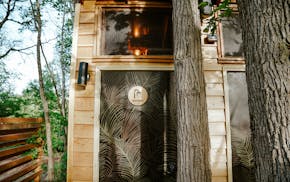
New upscale camper cabins add to Cuyuna options
Christiania, copenhagen's hippie oasis, wants to rebuild without its illegal hashish market.
- Bad call? Late foul against UConn helps Iowa to Final Four title game 10:01am
- Minneapolis to move 'democracy center' into burned Third Precinct building 9:00am
- Service dog helps Minneapolis high-school counselor cope with MS • Inspired
- Twin Cities exhibit traces 'Unfinished Journey' for people with developmental disabilities • Inspired
- Owner of Hopkins doggie day care shares tips for helping pups learn good manners • Inspired
- Twin Cities area clinics offer holistic care to women over 65 • Inspired
- Eden Prairie photographer creates portraits of dogs using AI • Inspired
© 2024 StarTribune. All rights reserved.
Sustainable Safari

Top ways to experience nearby attractions

Most Recent: Reviews ordered by most recent publish date in descending order.
Detailed Reviews: Reviews ordered by recency and descriptiveness of user-identified themes such as waiting time, length of visit, general tips, and location information.
SUSTAINABLE SAFARI: All You Need to Know BEFORE You Go (with Photos)
- Sun - Sun 12:00 - 18:00
- Mon - Sat 11:00 - 19:00
- (0.47 mi) Emerald Inn
- (7.65 mi) Historic District BnB
- (4.22 mi) Best Western Plus White Bear Country Inn
- (6.94 mi) The Saint Paul Hotel
- (6.69 mi) Celeste St Paul
- (0.03 mi) Sweet & Sour Taqueria
- (0.03 mi) Charleys Cheesesteaks
- (0.07 mi) Cinnabon
- (0.06 mi) Charley's Grilled Subs
- (0.06 mi) Panda Express
- (0.05 mi) Tactical Escape 101- Maplewood Mall
- (0.33 mi) Myth
- (0.06 mi) JCPenney
- (0.06 mi) At The Pier Arcade
- (0.10 mi) Kohl's
Sustainable Safari


Top ways to experience nearby attractions

Most Recent: Reviews ordered by most recent publish date in descending order.
Detailed Reviews: Reviews ordered by recency and descriptiveness of user-identified themes such as waiting time, length of visit, general tips, and location information.
SUSTAINABLE SAFARI: All You Need to Know BEFORE You Go (with Photos)
- Sun - Sun 12:00 PM - 6:00 PM
- Mon - Sat 11:00 AM - 7:00 PM
- (0.75 km) Emerald Inn
- (12.24 km) Historic District BnB
- (6.76 km) Best Western Plus White Bear Country Inn
- (11.10 km) The Saint Paul Hotel
- (10.70 km) Celeste St Paul
- (0.05 km) Sweet & Sour Taqueria
- (0.05 km) Charleys Cheesesteaks
- (0.11 km) Cinnabon
- (0.10 km) Charley's Grilled Subs
- (0.10 km) Panda Express
- (0.08 km) Tactical Escape 101- Maplewood Mall
- (0.52 km) Myth
- (0.10 km) JCPenney
- (0.10 km) At The Pier Arcade
- (0.16 km) Kohl's

Tesla Cancels Low Cost Electric Car Plans Amid Chinese EV Competition

Magnitude 4.8 Earthquake Hits New York; New Jersey

EPA Allots $20 Billion In Green Bank Grants
Weather Experts Predict Extremely Active Atlantic Hurricane Season This Year

Tropical Forest Loss Declined In 2023, Threats Still Persistent
- Click here to read All News
- Biotechnology Basics
- Biotechnology Advanced
- Bioremediation
- Natural Resource Management
- Carbon Footprint & Carbon Accounting
- Climate Change
- Air Pollution
- Noise Pollution
- Water Pollution
- Environmental Impact Assessment
- Disaster Management
- Carbon Trading
- Green Energy
- Plastic Waste Management
- Solid Waste Management
- Wastewater Management
- All Categories
- Referral Program
- Advertise with us
Select Page
Best Sustainable Safari Tips For Your Next Jungle Trip
by Sarah Tancredi | Nov 9, 2023 | Sustainability
Embarking on a jungle safari is a thrilling and awe-inspiring adventure that allows travelers to immerse themselves in the wonders of untamed nature and witness majestic wildlife up close. However, as our understanding of environmental conservation grows, so does our responsibility as conscious travelers to ensure that our experiences benefit the delicate ecosystems we encounter. Sustainable safaris offer a harmonious way to explore the jungles while preserving their pristine beauty for future generations. This article explores the importance of adopting sustainable practices during jungle trips, focusing on ecotourism, wildlife protection , community engagement, and responsible travel habits . As eco-conscious adventurers, our choices can make a meaningful difference in safeguarding these precious habitats and the incredible species that call them home.
Table of Contents
The Importance of Sustainable Safaris
Sustainable safaris play a pivotal role in safeguarding the delicate balance of jungle ecosystems and promoting responsible tourism. Sustainable practices are essential during a safari because they directly impact wildlife preservation, biodiversity, and the environment’s overall health.

Eco-Tourism and Sustainability
Ecotourism and sustainability are closely linked concepts involving responsible travel, environmental conservation, and community well-being. Ecotourism refers to tourism that focuses on visiting natural areas, supporting local communities, and promoting conservation efforts. Sustainability, on the other hand, entails meeting the needs of the present without compromising the ability of future generations to meet their own needs.

Best Sustainable Safari Tips
1. choose a responsible safari operator.
When selecting a responsible safari operator, choose one committed to eco-friendly practices and wildlife conservation. They help you emphasize low-impact activities, support local communities, and follow ethical wildlife viewing guidelines. Ensure they prioritize eco-friendly accommodations, waste reduction, and conservation initiatives. You can immerse yourself in the jungle’s incredible splendor while helping to benefit the environment and local communities. Choose a sustainable safari operator to embark on an unforgettable adventure while preserving the wilderness for future generations.
2. Respect Wildlife
It is paramount to respect wildlife to maintain the delicate balance of the jungle ecosystem. Adhering to ethical guidelines ensures the well-being of animals and their habitats. Observe wildlife from a safe distance, avoiding interference with their natural behaviors. Refrain from feeding or touching animals, as it can disrupt their ecological roles and lead to dependency on humans. Responsible wildlife viewing contributes to preserving biodiversity and fosters harmonious coexistence with nature. By respecting wildlife during your sustainable safari, you play a crucial role in safeguarding the jungle’s incredible inhabitants and supporting their long-term conservation.
3. Stay in Eco-Friendly Accommodations
During your sustainable safari, prioritize staying in eco-friendly accommodations to minimize environmental impact. Choose lodges or camps that implement sustainable practices such as using renewable energy sources, conserving water, and recycling waste. Eco-friendly accommodations often have a lower carbon footprint and contribute to preserving the surrounding natural environment. By supporting such establishments, you are promoting sustainable tourism and helping to safeguard the fragile jungle ecosystems. Enjoy the comfort of eco-friendly lodgings while knowing that your stay contributes to the long-term conservation efforts of the wildlife and habitats you have come to admire.
4. Minimize Plastic Waste
In a sustainable safari, minimizing plastic waste is essential to protecting the jungle’s pristine environment. Take reusable water bottles and avoid single-use plastic items like straws and bags. Choose eco-friendly toiletries and personal care products with biodegradable packaging. Properly dispose of plastic waste and participate in lodge or camp recycling programs. By reducing plastic usage , you help preserve wildlife habitats, preventing harm to animals that may ingest or become entangled in plastic debris. Embrace the responsibility of being a conscious traveler and help keep the jungle clean and plastic-free for a sustainable and enjoyable safari experience.
5. Follow The “Leave No Trace” Principle
Embracing the “ leave no trace ” principle is crucial for a sustainable safari experience. This ethos encourages travelers to minimize their impact on the jungle’s natural environment. Avoid leaving any physical evidence of your presence, such as litter or damage to plants and wildlife. Stay on designated trails and paths to protect delicate ecosystems. Refrain from collecting souvenirs or disturbing cultural artifacts. By adhering to the “leave no trace” principle, you contribute to the jungle’s preservation, ensuring that future generations can also revel in its wonders. Let responsible travel be the guiding force in leaving the jungle untouched and unharmed.
6. Choose Low-Impact Activities
Opt for low-impact activities to minimize your ecological footprint on a sustainable safari. Choose activities that cause minimal disturbance to the jungle’s delicate ecosystems and wildlife. Walking safaris, guided nature hikes, and canoeing are excellent low-impact options that allow you to immerse yourself in the natural surroundings without causing harm. These activities promote wildlife conservation and preserve the integrity of the jungle’s diverse habitats. By engaging in low-impact activities, you actively contribute to the sustainability of the safari experience and support the long-term health of the environment, ensuring that the wonders of the jungle remain intact for future generations.
7. Use Biodegradable and Eco-Friendly Products
Choose biodegradable and eco-friendly products to reduce environmental impact in a sustainable safari. Choose biodegradable sunscreen, shampoo, soap, and other personal care items to minimize water pollution and protect aquatic life. Use eco-friendly insect repellents and cleaning agents that do not harm the delicate ecosystem . Using these products, you prevent harmful chemicals from entering the jungle’s ecosystems and support environmentally responsible practices. Embrace biodegradable and eco-friendly products during your safari to ensure that your journey remains sustainable and preserves the jungle’s natural splendor for future generations.
8. Support Local Communities
Supporting local communities is vital for responsible travel on a sustainable safari. Engage with local artisans, guides, and businesses to contribute directly to the well-being of the people who call the jungle their home. Purchase locally-made souvenirs and products to support the local economy and empower communities. Participate in cultural activities and interact respectfully with the locals, learning about their traditions and ways of life. By supporting local communities, you play an essential role in promoting sustainable development, preserving cultural heritage, and ensuring that the benefits of tourism reach those who live in and protect the jungle every day.
9. Offset Your Carbon Footprint
Offsetting your carbon footprint is crucial to ensuring a sustainable safari experience. Traveling to your jungle destination may result in carbon emissions leading to climate change. By participating in carbon offset programs , you can compensate for these emissions by supporting projects that reduce or remove greenhouse gases from the atmosphere. Such projects may include reforestation efforts, renewable energy initiatives, or sustainable agriculture practices. Carbon offsetting helps counteract the environmental impact of your travel and demonstrates a commitment to environmental responsibility. By offsetting your carbon footprint, you help safeguard wildlife and the jungle, making your safari journey more sustainable and planet-friendly.
10. Practice Responsible Photography
Responsible photography is essential for respecting wildlife and their habitats in a sustainable safari. Follow ethical guidelines to avoid causing stress or disturbance to animals. Refrain from using flash photography. It can startle or harm wildlife, especially during nighttime activities. Maintain a safe distance from animals and never bait or lure them for a photo opportunity. Respect restricted areas and cultural sensitivities when taking pictures. Responsible photography allows you to capture the beauty of the jungle while ensuring the well-being of its inhabitants. By being mindful of the impact of your photography, you can contribute to the conservation and preservation of precious wildlife in their natural environment.
Also Read: Biodiversity Conservation
Embarking on a sustainable safari in the jungle is a breathtaking adventure and a crucial step towards responsible travel and conservation. By prioritizing ecotourism, respecting wildlife, supporting local communities, and practicing responsible habits, we can ensure that our journeys benefit delicate ecosystems and wildlife. Sustainable safaris offer a unique opportunity to experience the wonders of nature while preserving the natural heritage for future generations. Let us embrace the principles of sustainability on our jungle trips, making a collective effort to protect and cherish these invaluable ecosystems that are vital for the health of our planet.
Also Read: Green Travel: Travel the World, Leave Only Footprints
Submit a Comment Cancel reply
Your email address will not be published. Required fields are marked *
Save my name, email, and website in this browser for the next time I comment.
Submit Comment
Explore Categories
Related posts.
- How Corporates Are Reviving The Lost Crafts Of India
- Highest Paying ESG Consultant Jobs In The US
- Protein and Gene Manipulation
- 15 Best Sustainable Men's Clothing Brands Of 2024
- Top Environmental Reporting Jobs In The USA
How to choose a sustainable African safari

Editor's Note
Going on an African safari can be the chance of a lifetime to see some of the world's most iconic wildlife up close , experience Earth's extraordinary untouched corners, learn about new cultures and reconnect with nature.
A safari trip can also be the opportunity to make sustainable, responsible choices about how and where you travel, and to maximize the impact your travel spending has on conservation, community and environmental programs in various destinations.
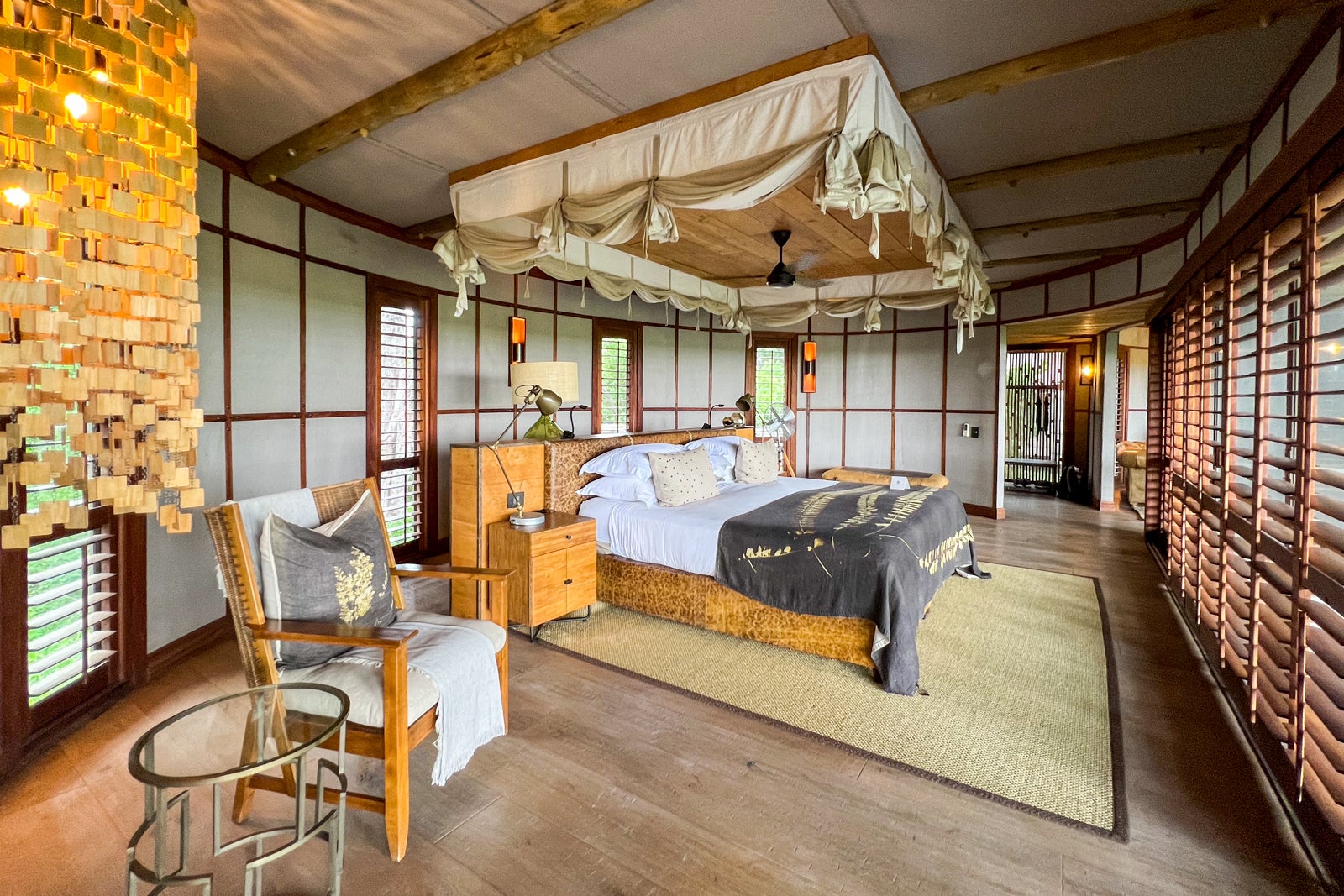
Many travelers decide where to go on safari in Africa based on their schedules and the seasonality in individual regions — both in terms of the weather and the animals they will most likely see. Others focus on sighting specific species, resulting in visits to places like Rwanda or Uganda to trek and see mountain gorillas or trips to destinations like Kenya to observe the endangered pachyderms at a rhino sanctuary.
Sustainability can be another excellent factor in determining where you should go on safari, though. Many of the most reputable safari outfitters and camps put sustainability front and center in their operations, combining environmental practices, conservation commitments and community outreach to create the ultimate holistic travel experience.
Doing a little research on the regions you are considering for a safari and the specific tour operators and lodges in your chosen location can make a huge difference in the effect your tourism dollars have on things like wildlife preservation campaigns, economic development in local villages and minimizing the overall environmental footprint of your individual journey.
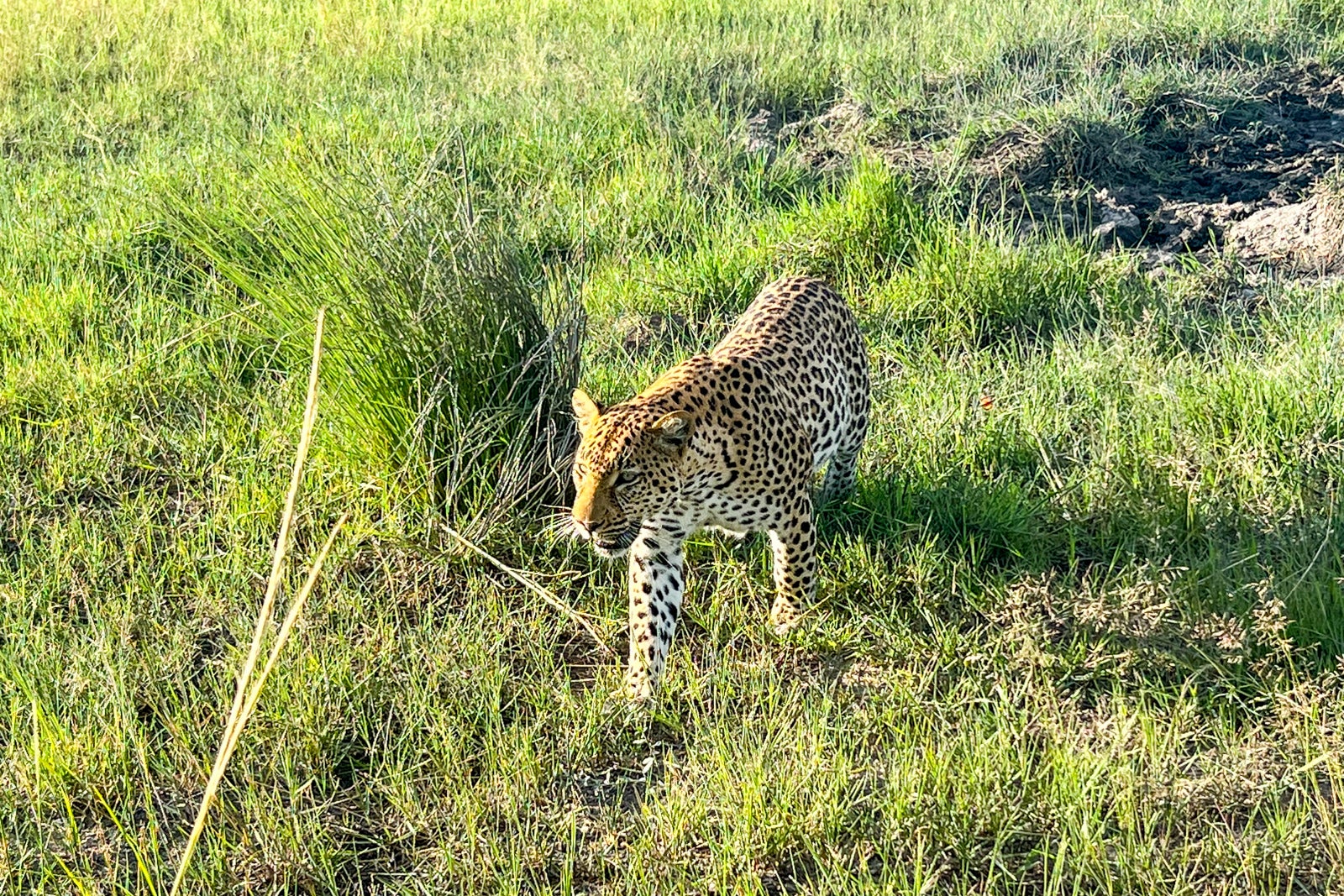
Unlike some other forms of travel that let you book certain components — flights, hotels, cruises, etc. — a la carte by yourself, many safari companies require you to book the bulk of your trip (if not all of it) through them or a partner agency or operator. Because of this, you can ask these representatives about their sustainability track records and even specific programs while planning your trip. Any reliable operator should have materials on hand to send you to help you make your decision.
Here are some of the factors you can investigate to determine just how sustainable your safari can be, plus some of the safari companies undertaking meaningful measures in this sphere by weaving principles of environmental consciousness, wildlife protection and community development into their core ethos and operations.
Eco-sensitive camps
For North American and European travelers, going on an African safari typically necessitates carbon-intensive long-haul flights and sometimes additional bush flights to reach remote regions. In order to limit the rest of your carbon footprint while on safari, look into the eco-credentials of the camps or outfitters you are considering.
Many safari camps, for instance, now run mostly or even entirely on solar power. At both andBeyond Nxabega and andBeyond Xaranna in Botswana 's Okavango Delta, 80% of the camps' total electricity consumption is supplied by solar photovoltaic plants and Tesla Powerpack battery energy storage systems.
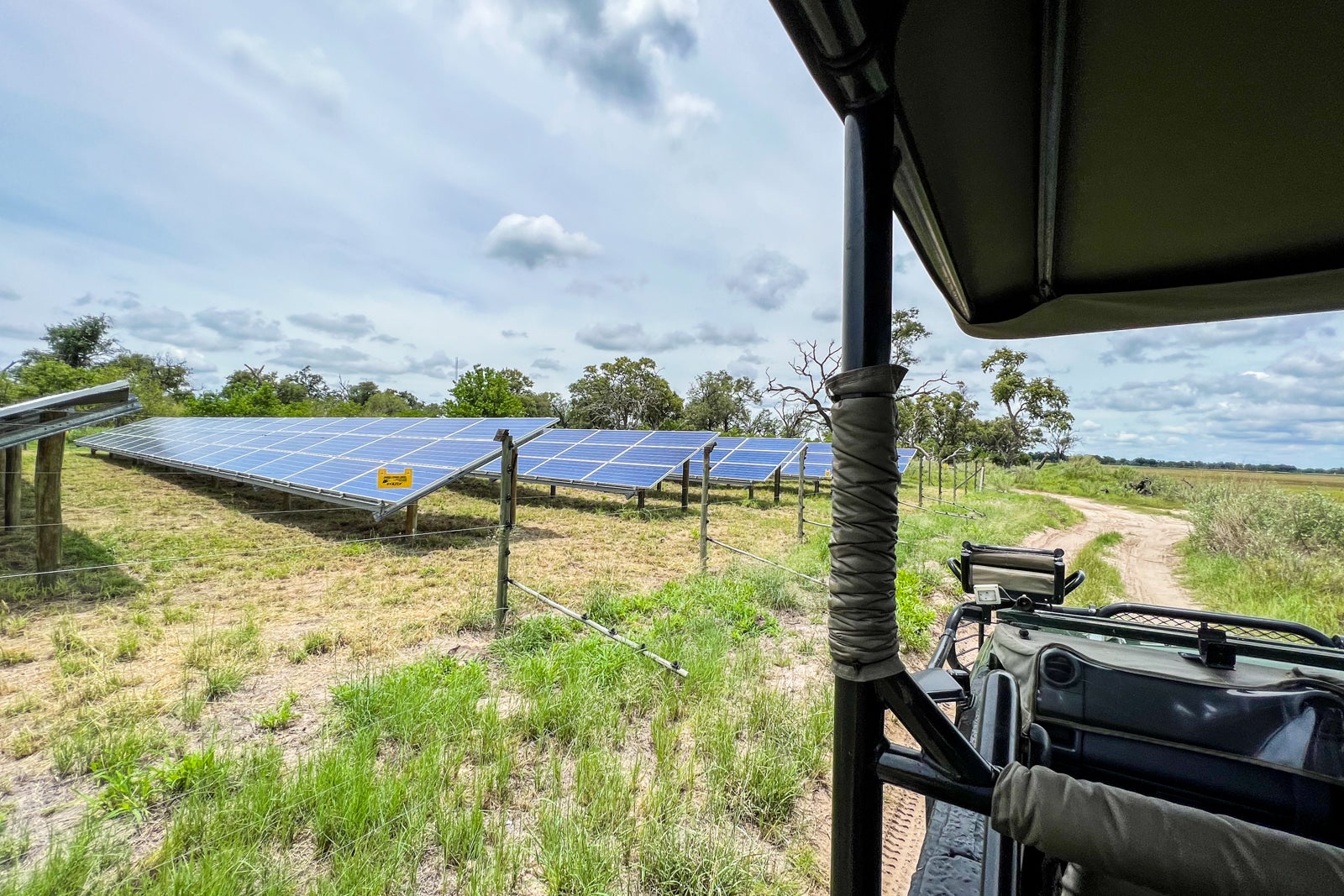
Nearby, Wilderness ' Chitabe and Mombo camps run on 100% solar (as do 17 of the company's other camps), and Wilderness has plans to retrofit and invest in further solar power for all new camps and camp refurbishments. Not only is that great for the environment, but it's also the best means of ensuring an uninterrupted power supply to guests in an area with little other infrastructure.
Cheetah Plains , an exclusive-use safari villa in South Africa's Sabi Sand Nature Reserve, now uses Toyota Land Cruiser electric safari vehicles with Tesla batteries that are charged via solar power to whisk guests across the reserve's thousands of acres, creating a zero-emission game drive.
In Tanzania's Ruaha National Park, Usangu Expedition Camp is steering a different path, developing safari vehicles that run on ethanol, which is derived from molasses produced in the southern part of the country, instead of diesel. The staff even calls the vehicles "Gongos," a type of traditional Tanzanian gin, since the ethanol looks and smells like the spirit.
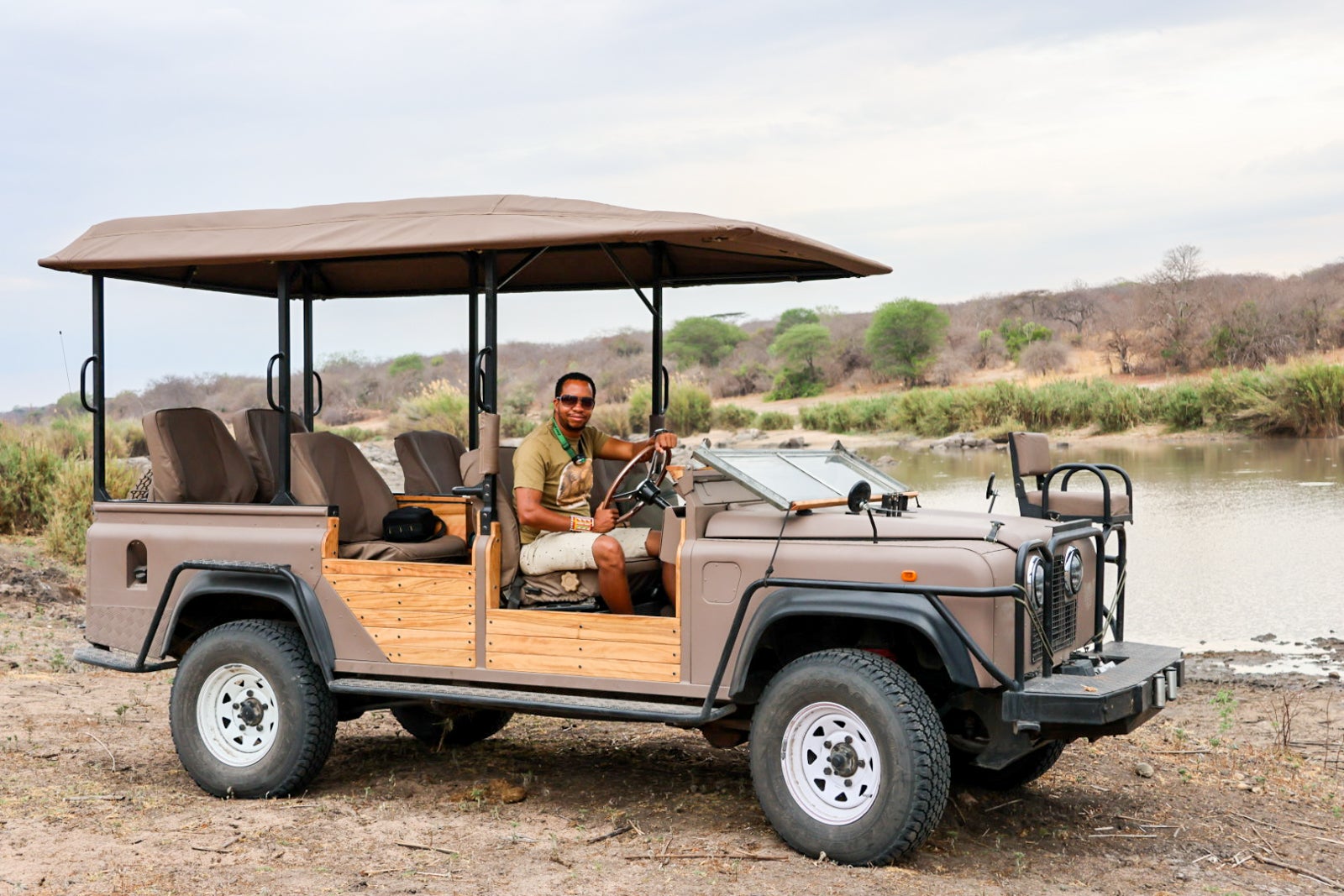
But alternative power and fuel are just the start. For its part, Chitabe recycled the wood from an old set of raised walkways to create a chic bar and lounge area for its current guests. What's old is new again ... and looking better than ever.
Many recently built and forthcoming safari camps are being constructed using both traditional materials and techniques, such as thatching and weaving completed by local artisans, and up-to-the-minute technologies like 3D printing and innovative recycling methods utilizing salvaged materials to limit their physical footprint.
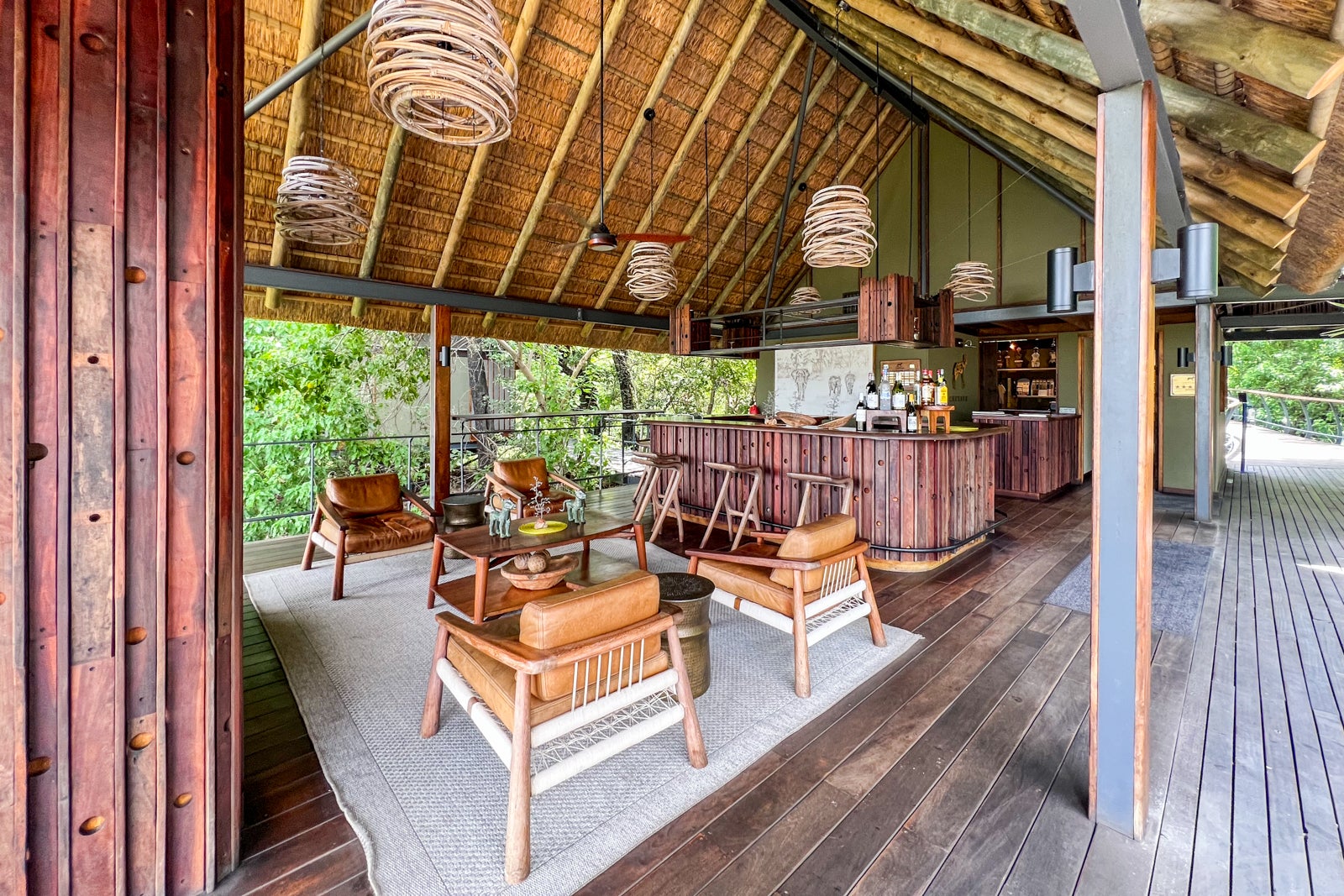
Time + Tide Chinzombo in Zambia's South Luangwa National Park was designed to be completely dismantled if necessary so as to leave a minimal trace on the landscape, and Wilderness is currently constructing a new tented camp in Botswana's Mbabe concession called Mokete that can be completely disassembled as if it had never been there.
Simple measures can have a large impact as well. Camps like Wilderness' DumaTau and sister Little DumaTau in Botswana's riverine Linyanti region provide guests with Healing Earth's all-natural, biodegradable bath and body products during their stay to minimize harmful runoff from the camp's water management system.
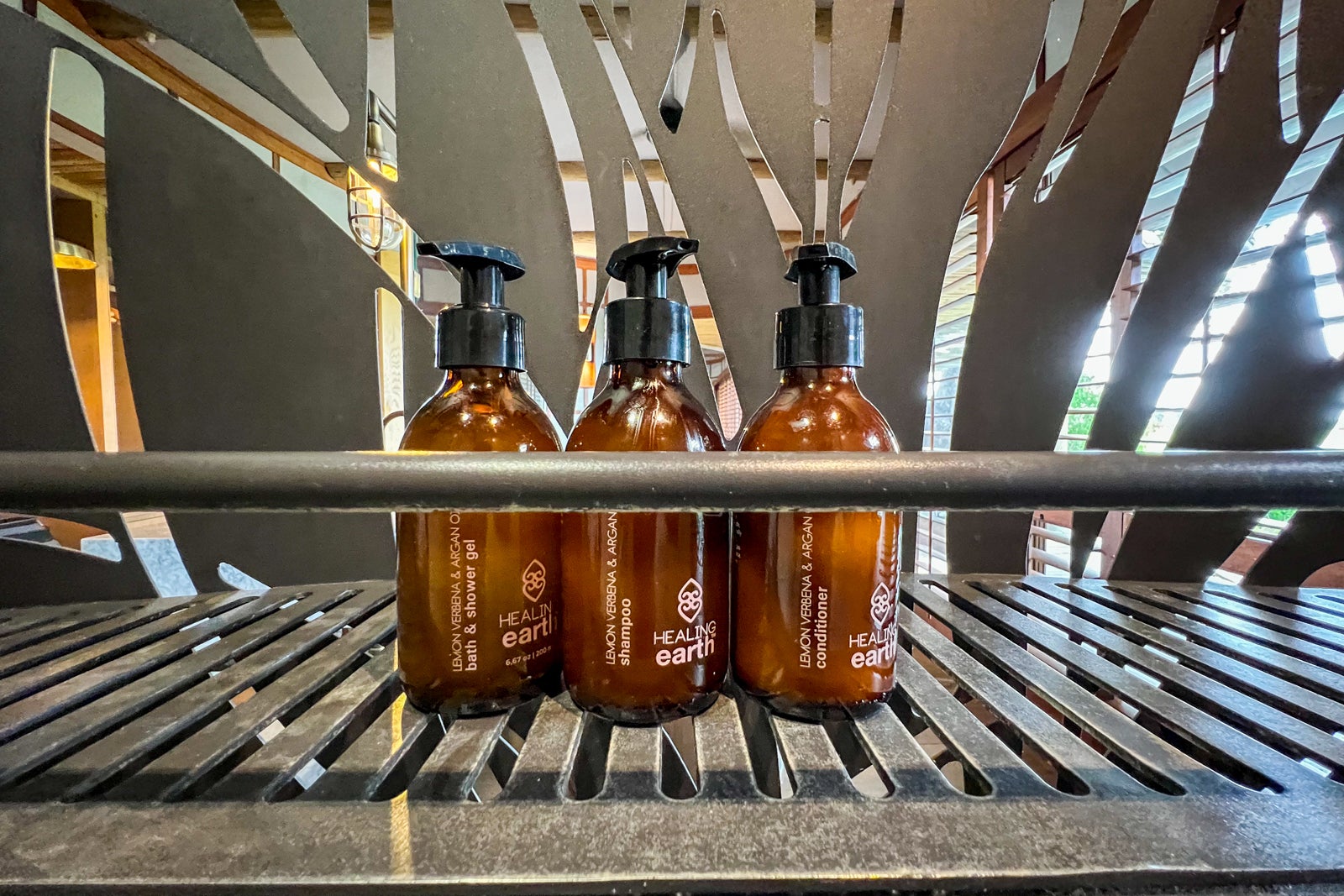
For its part, the Elewana Collection of lodges in Kenya and Tanzania launched its "Ban the bottle" initiative in 2018, giving guests reusable water bottles that they can fill up at stations in the camps. The outfitter estimates that doing so in just six of its Kenyan lodges saves around 160,000 plastic bottles from going into landfills each year.
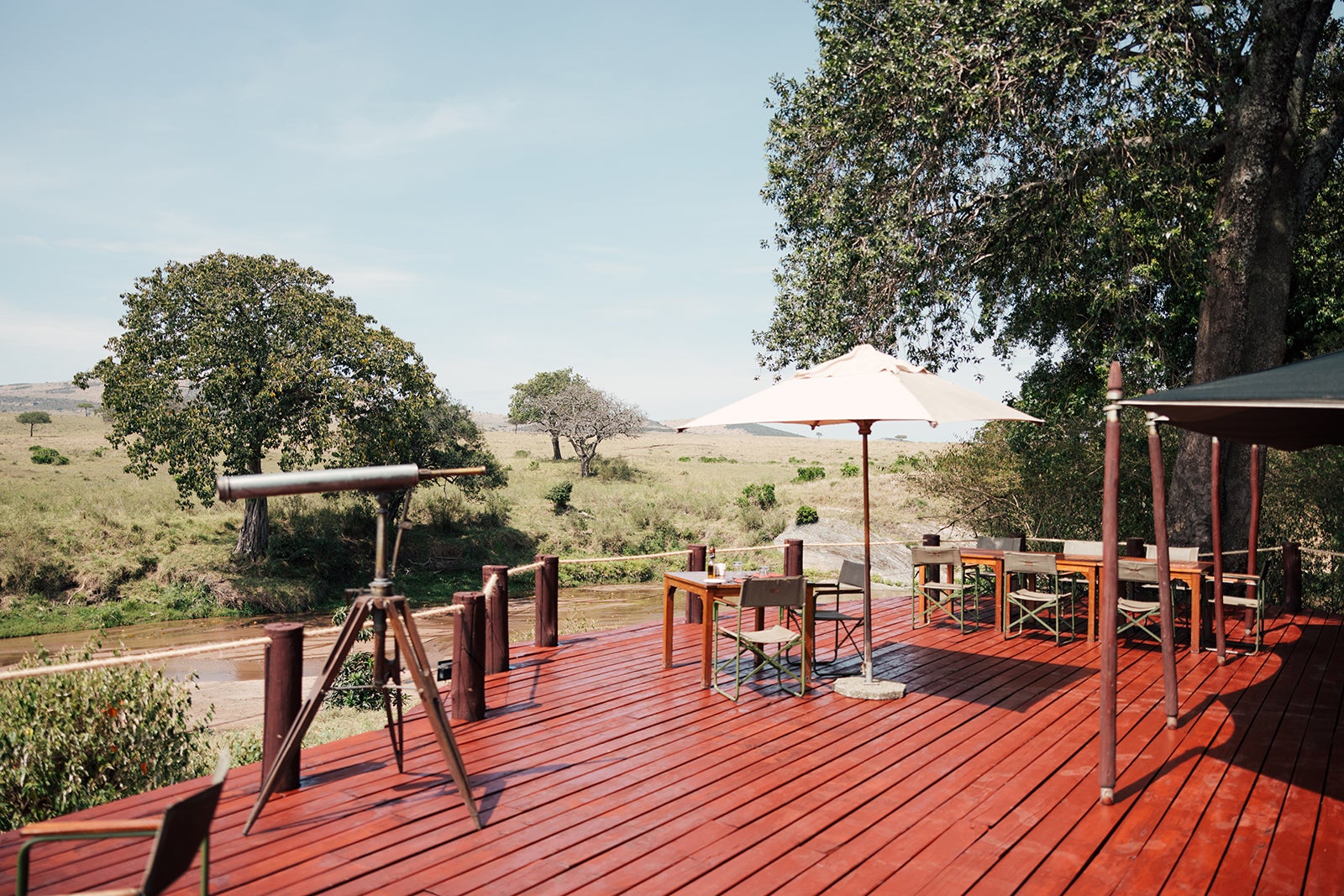
Elewana also dropped plastic straws the following year. Even more fun for Elewana guests is the opportunity to toss out seed balls (little nutrient packs that encase seeds of Indigenous plants) during a walk or game drive somewhere along their journey so they're doing their little part to help revegetate the wild places they are enjoying.
Wildlife conservation
It seems obvious, but without wildlife, there wouldn't be safari camps. For that reason, many safari companies actively support and participate in wildlife conservation efforts , some of which are specific to individual regions while others are more widespread.
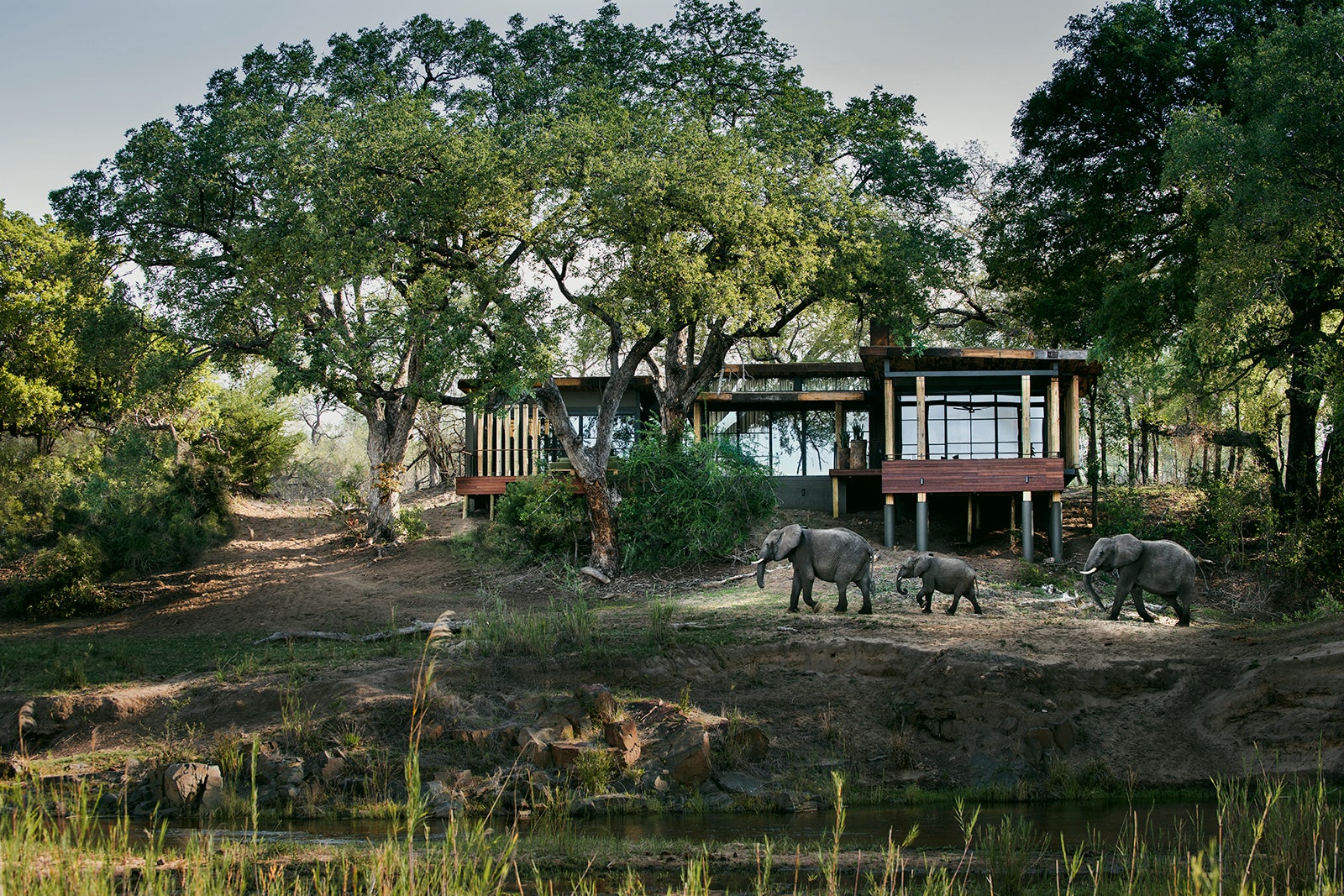
Guests at andBeyond's Tengile River Lodge and Kirkman's Kamp , which are near each other in South Africa's Sabi Sand Nature Reserve, can certainly get a thrill sighting the area's thriving lion and leopard populations on game drives. However, guests may not know that their guides are also logging those sightings and providing the information to Panthera, an organization dedicated to tracking and protecting big cat populations around the world.
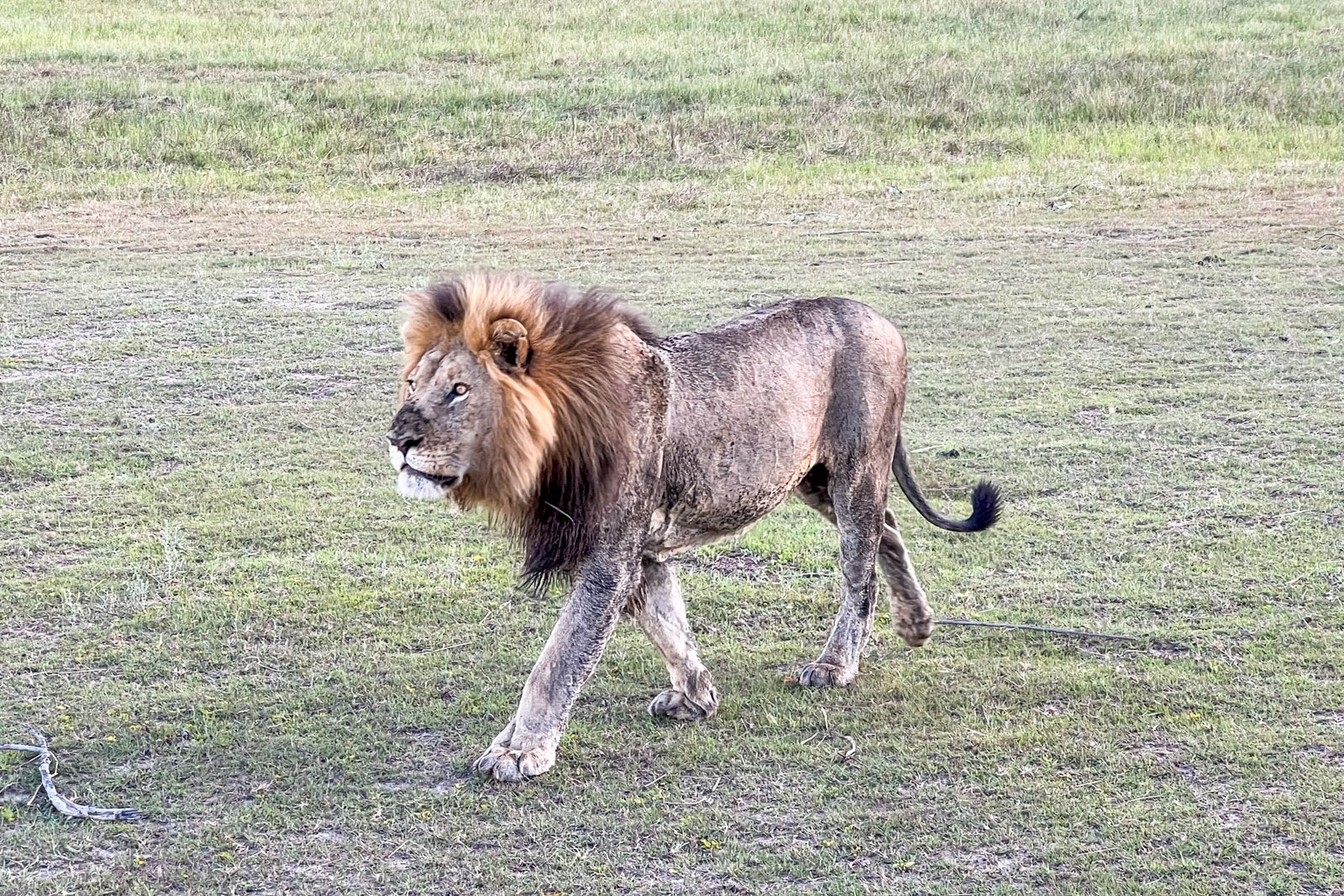
Various other andBeyond camps, including Phinda Private Game Reserve and Ngala Safari Lodge , help fund rhinoceros anti-poaching units. Guests at Ngala can even observe researchers tagging rhinos' ears with microchips to help monitor the highly endangered animals. These are individual initiatives, but they are all part of andBeyond's overarching commitment to conservation and community projects that it supports through its Africa Foundation .
Likewise, Elewana Collection has a charitable arm called The Land & Life Foundation that underwrites various efforts such as the Wildlife Warrior Program, which has clubs in primary schools throughout Kenya and Tanzania. The children who join can take part in activities to learn more about environmental and animal conservation. The club currently counts around 2,200 members and even provides primary and secondary educational scholarships to many of them.
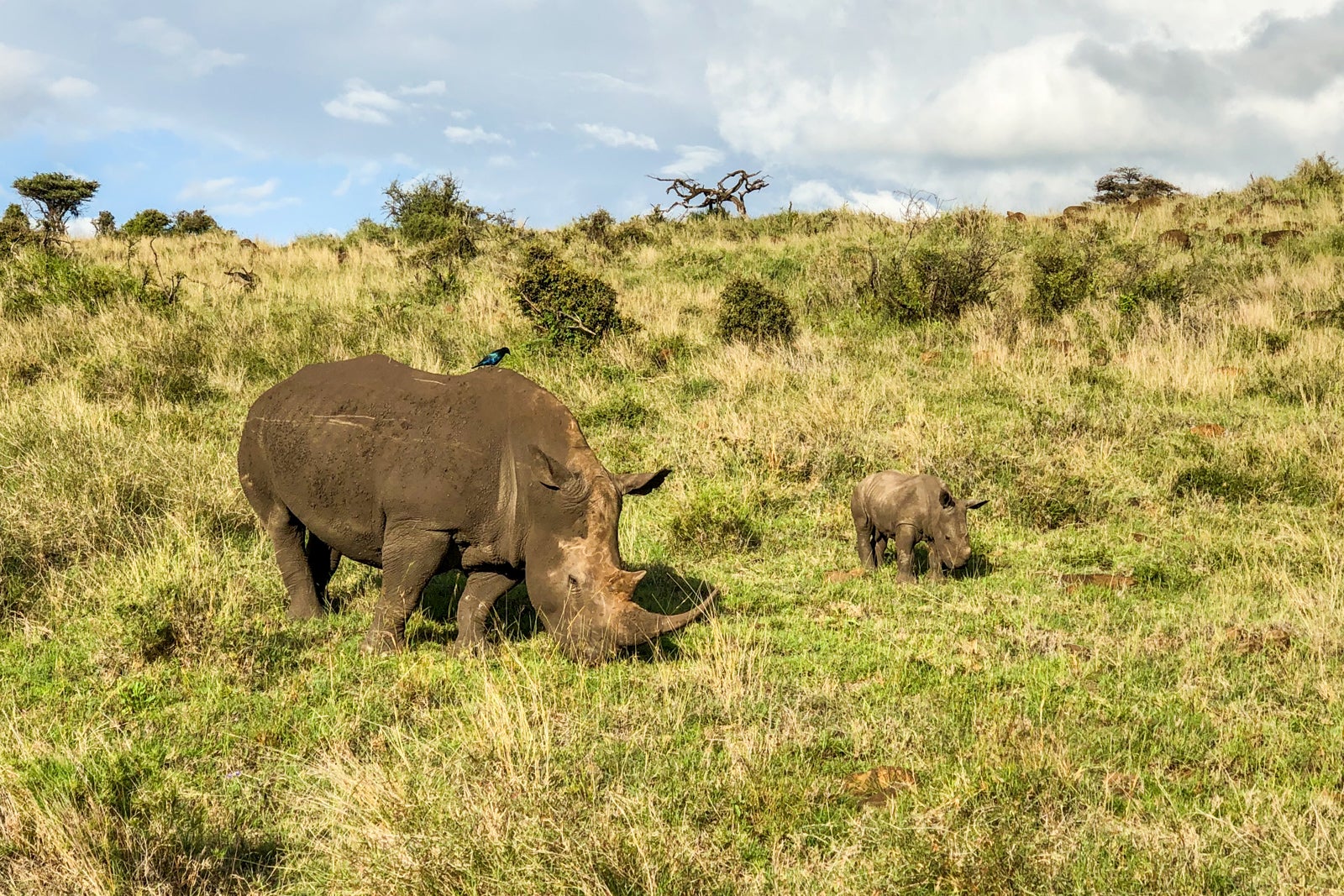
High-end safari company Singita , which has lodges in South Africa, Zimbabwe, Tanzania and Rwanda, established its Singita Conservation Foundation decades ago with a 100-year plan to protect Africa's wildlife and wilderness for future generations. These days, it partners with other nonprofit trusts and funds on a plethora of projects, including rhino reintroduction and protection in the Malilangwe Wildlife Reserve in Zimbabwe, land management and anti-poaching efforts in South Africa's Kruger National Park and combating invasive vegetation as well as helping in the recovery of megafauna like elephants and buffaloes in Tanzania's Serengeti National Park.
Community improvement projects
Without buy-in from local communities, conservation efforts would go nowhere. Those who live in or near game reserves and national parks need to benefit from the tourism revenue that these natural wonders generate. That's why many safari companies' conservation drives include community-based components.
One telltale sign that a safari company is supporting the communities where it operates in a meaningful way is simply through employment. Specifically, whether its camps employ people from the villages or regions that surround them in high proportions. Not only is this a boon for economic stability and growth in places that might otherwise be destitute, but it ensures that tourism dollars stay in the area and benefit the people who live there.
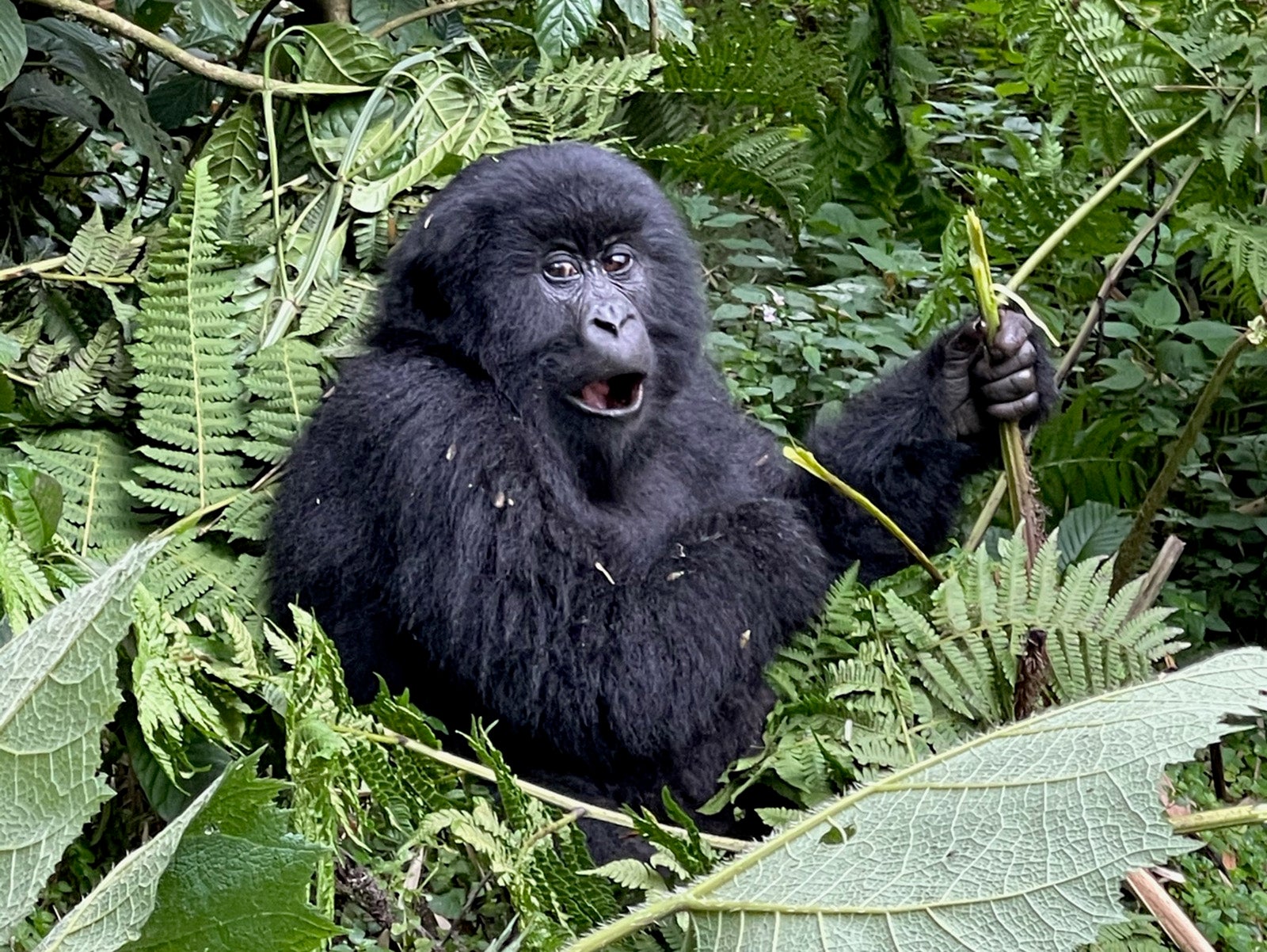
Many safari companies' commitments to communities go beyond employment, though. Praveen Moman, who grew up in Uganda before his family had to emigrate to the United Kingdom, founded Volcanoes Safaris in 1997, pioneering the high-end safari experience in both Uganda and Rwanda.
While the Volcanoes Safaris' lodges have become mainstays for both gorilla and chimpanzee trekking, it is perhaps the company's nonprofit organization, the Volcanoes Safaris Partnership Trust, that will be its most lasting legacy. The trust supports preservation efforts for the great apes of the region, but it also underwrites innovative, community-based programs that guests are encouraged to explore during their stays at the lodges.
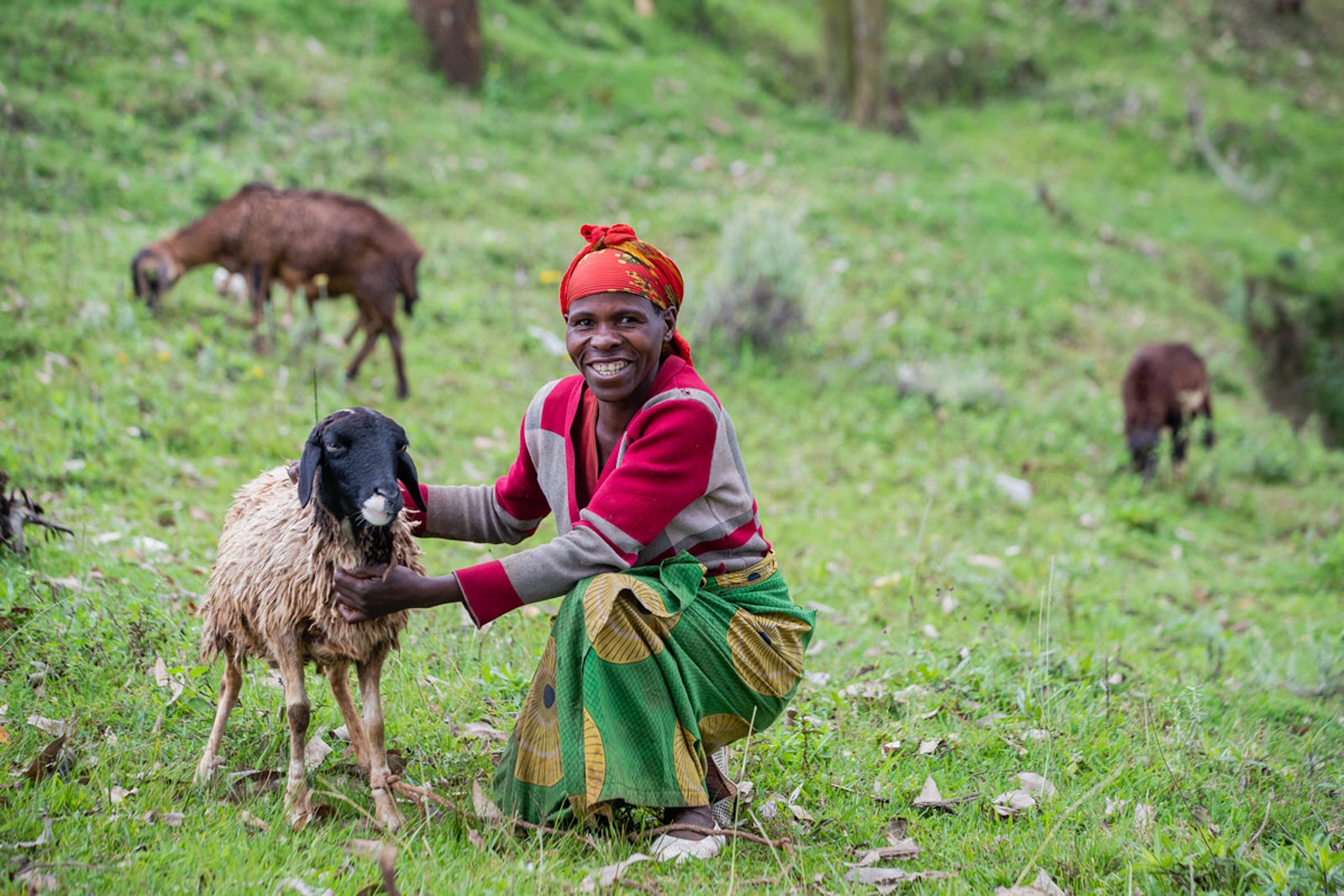
"When I set up Volcanoes Safaris in 1997 in southern Uganda and then in 2000 in neighboring Rwanda, the area was just coming out of the Great Lakes conflict," Moman told TPG via email. "This experience made me realize how important it was to not only focus on the lodges we were building and the gorilla and chimpanzee experience that we wanted our guests to enjoy, but also that local people need to get tangible economic benefits from conservation and ecotourism for them to support the great apes."
"Therefore," he continued, "I felt that it was important that the lodges should be connected to the communities around them. In each lodge, we have set up different community projects."
At Volcanoes Safaris' Virunga Lodge in Rwanda, for instance, guests can take a guided afternoon walk through several villages near Lake Bulera to see firsthand the impact of projects such as the "One sheep per family" program, which provides one sheep to each family in three nearby villages (more than 500 so far), thereby supplying them with sources of meat and milk along with natural fertilizer for their sustenance crops.
The lodge has also donated 250-plus water tanks to families in these villages, which help in the catchment of the region's abundant rainfall and ensure that there is a steady supply of water for drinking and crop irrigation during the dry season.
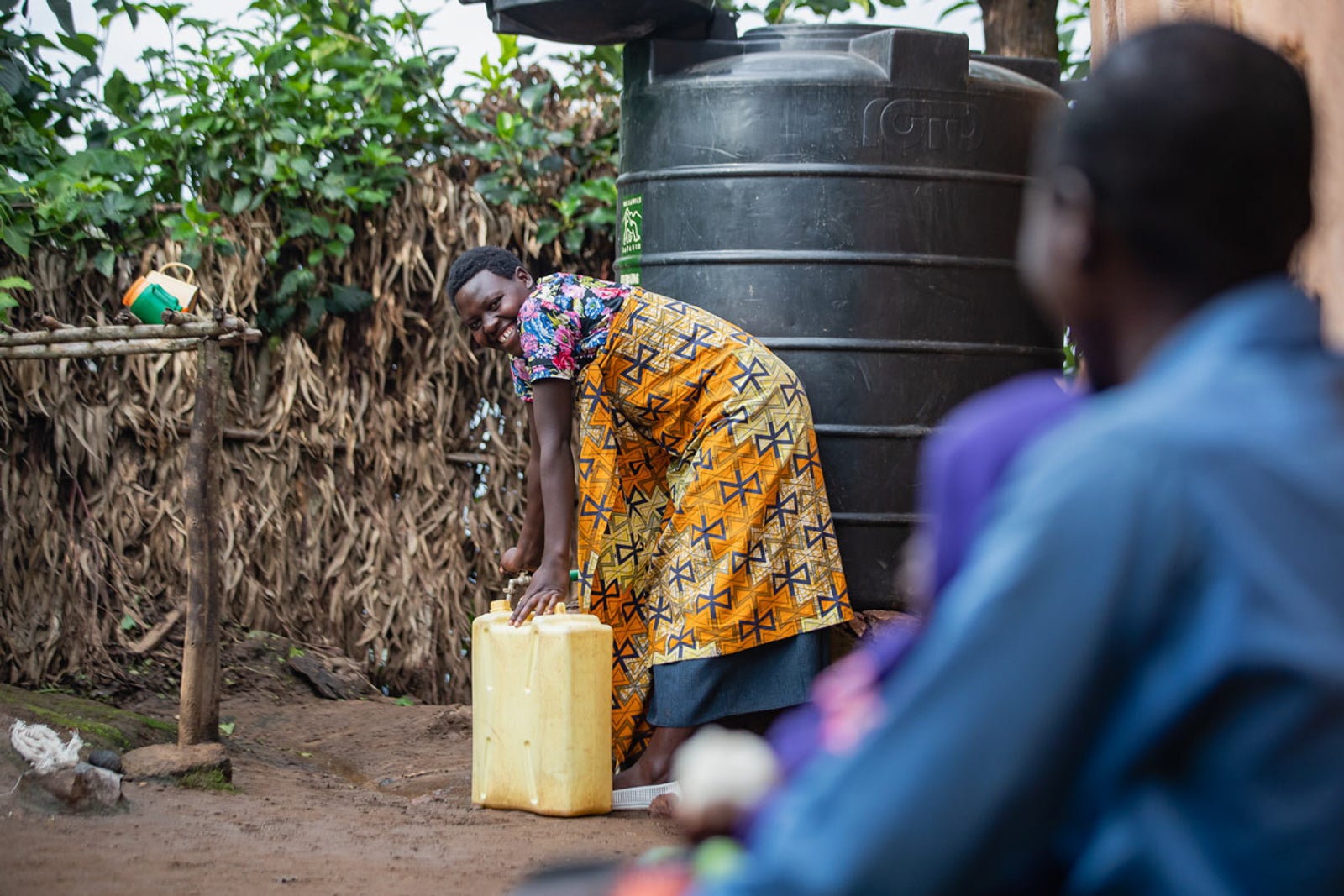
In Livingstone, Zambia, near Victoria Falls, Tongabezi , which is an elegant lodge along the banks of a tranquil stretch of the Zambezi River, has underwritten the Tongabezi Trust School (also known as Tujatane) since 1996, providing education and meals to children who live within walking distance of the academy. There are currently nearly 300 children between the ages of 3 and 17 enrolled, all of whom can take advantage of the classes and curriculum, as well as the music, sports, arts and computer facilities. What's more, the school provides funding to send some of the children on to secondary schools and even universities, ensuring a new generation of leaders and professionals with a commitment to the local community.
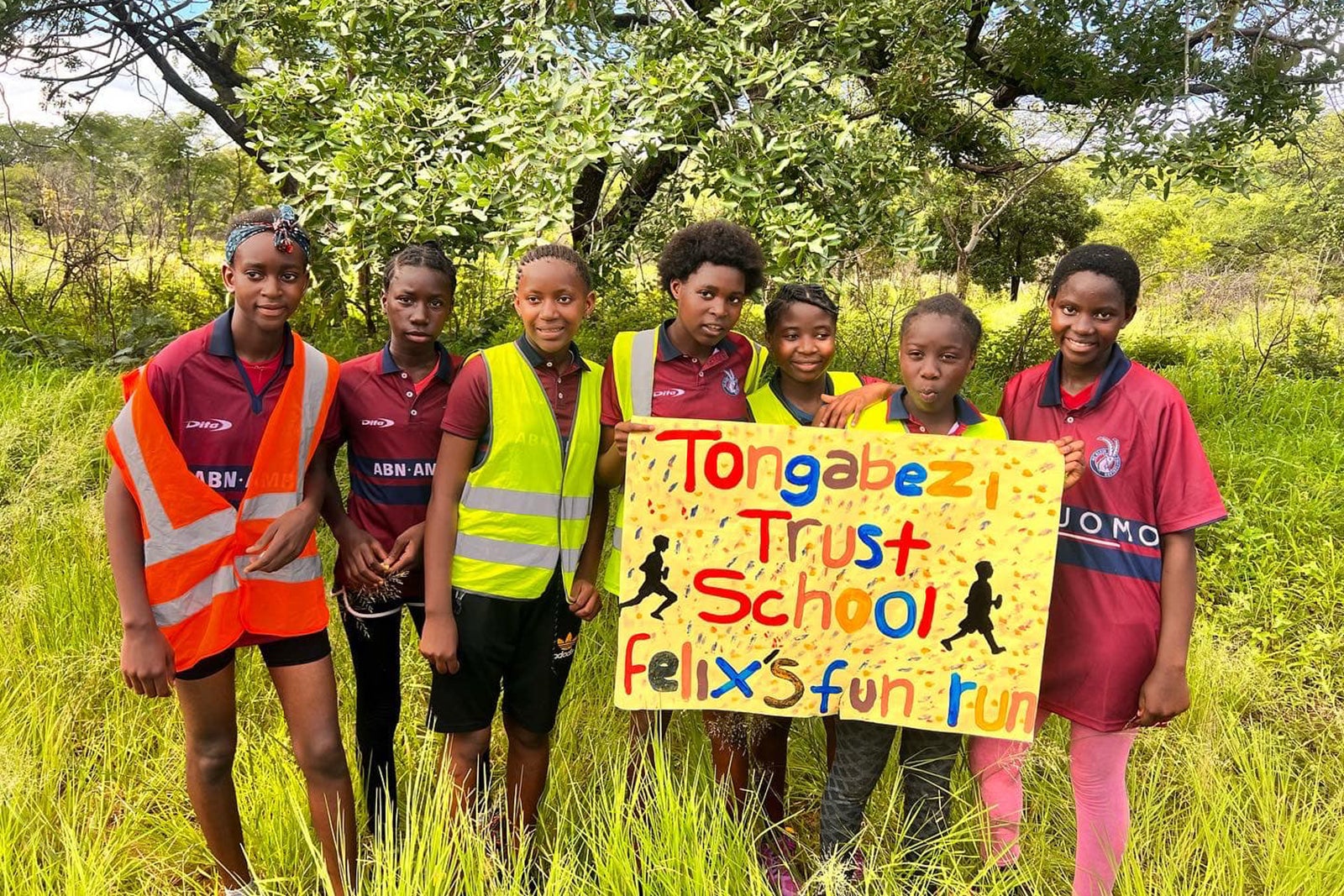
In Botswana, both andBeyond Nxabega and andBeyond Xaranna share several community-based projects, including the drilling of water boreholes for the communities of Gogomaga and Tsutsubega so that their inhabitants have steady sources of usable water; and funding a school in the rural farming village of Sexaxa near Maun (where the area's main airport is) so children no longer need to walk three hours, some of it through dangerous terrain, to attend the nearest school.
Longer-term development
Ongoing outreach and individual community projects aside, several safari companies have established philanthropic organizations or arms with a broader purview of economic development and social services not just in the areas where they operate, but in entire countries or regions.
Micato Safaris is one of the best-known luxury safari operators, partnering with premier lodges from multiple companies in Africa and Asia to create bespoke itineraries for its guests. However, it also underwrites AmericaShare , which was founded by a Micato Safaris employee named Lorna Macleod more than 35 years ago to support both community development and access to education in Mukuru, one the largest informal settlements in Nairobi, Kenya .
Today, the philanthropy operates the Harambee Community Centre , which has library and computer facilities as well as recreational grounds, in Mukuru itself. Residents can come for a quiet place to study or work, look for employment and take advantage of other services. AmericaShare also supplies fresh, drinkable water in the area via multiple distribution points.
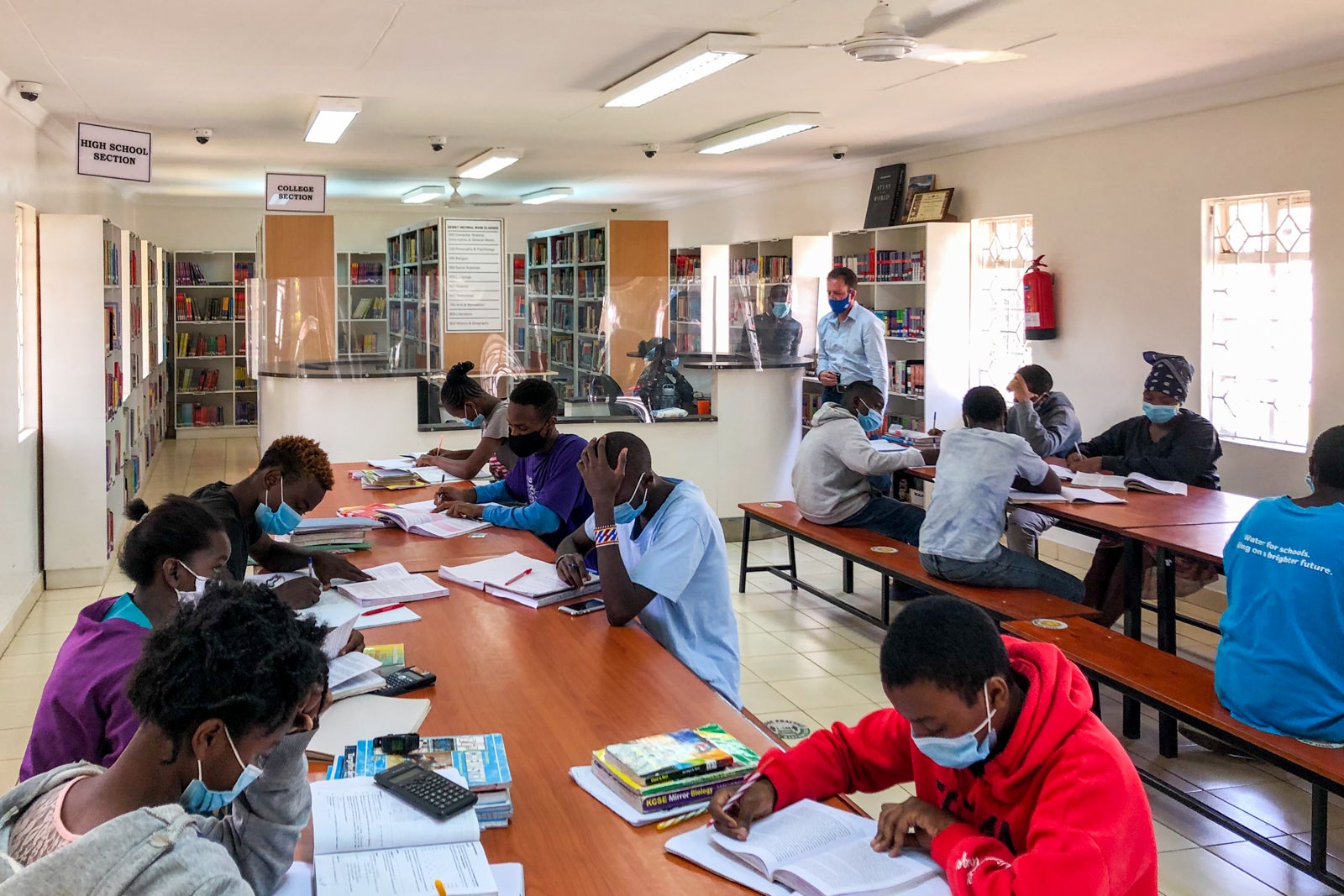
Guests who go on safari with Micato in Kenya get to visit the community center to learn more about its efforts and meet students who have benefited from AmericaShare's various educational undertakings during their stay. Those include supplying school uniforms to local children, sponsoring scholarships to primary and secondary schools, and sending some of the most vulnerable children to private boarding schools around Nairobi. In fact, for every safari the company sells, Micato provides the funds to send a child to primary school.
Micato also supports other efforts like Huru International , which supplies sanitary kits and reproductive health education materials to young women (more than 210,000 to date) throughout East Africa who might otherwise have to miss school or work due to the lack of reproductive health services in rural communities. By empowering women to take their health into their own hands, Huru helps them support their families and communities (not to mention cultivating their own careers) in ways that would not otherwise be possible.
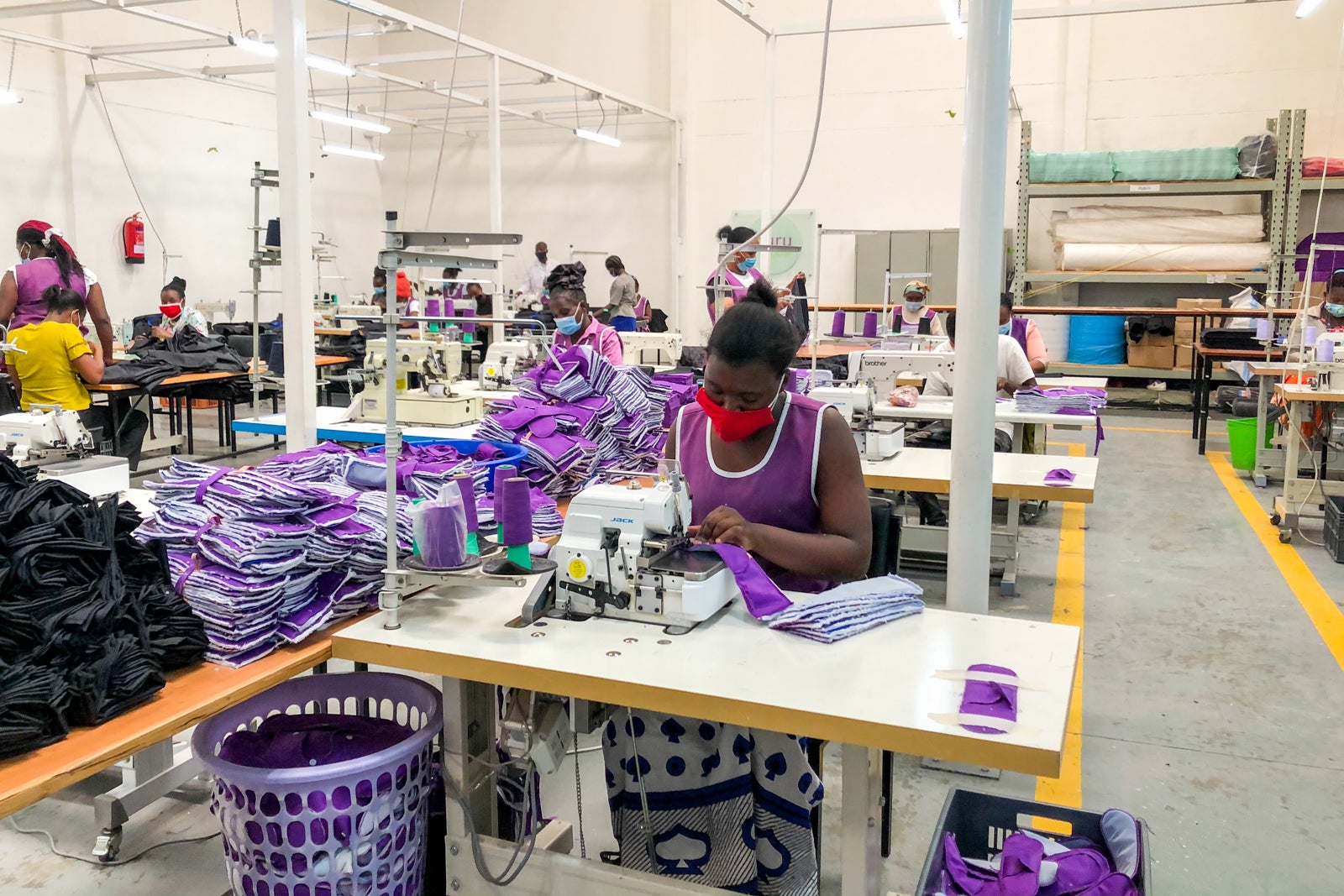
For its part, one of the most targeted yet impactful ways Wilderness carries out its conservation mission beyond the day-to-day and lodge-specific measures it takes is through its Children in the Wilderness program, which was founded in 2001.
The program aims to cultivate new generations of homegrown conservation leaders in Africa's rural communities by hosting student clubs at schools with activities that focus on environmental sustainability and wildlife education. Children in the Wilderness even brings kids to one of its camps on a yearly basis (7,800 to date) so they can learn firsthand about the importance of wildlife conservation. The program provides scholarships to high-achieving students, and some even return to become guides with Wilderness.
On a recent trip to Botswana, my guide at Little DumaTau, Segopotso Oja (See for short), was a former participant of Children in the Wilderness. "I was born and raised in a small village called Eretsha, located in the eastern Okavango Panhandle," Oja told me later by email when I contacted him after my trip to ask more about his experience with Children in the Wilderness.

"Wilderness works closely with the community in this area, and when I was 10 years old, I was given the opportunity to join a Children in the Wilderness Eco-Camp," Oja continued. "Here I grew to learn about and love the wild, and recognize the importance of protecting our wilderness, and this experience inspired me to pursue a career as a guide."
Spending time in the bush helps combat some of the negative portrayals of wild animals that village children are typically taught, Oja told me. "Once they explore the wilderness, this opens their minds and changes their way of thinking to realize the value of conservation and that there are other career opportunities available to them in the conservation and hospitality space."
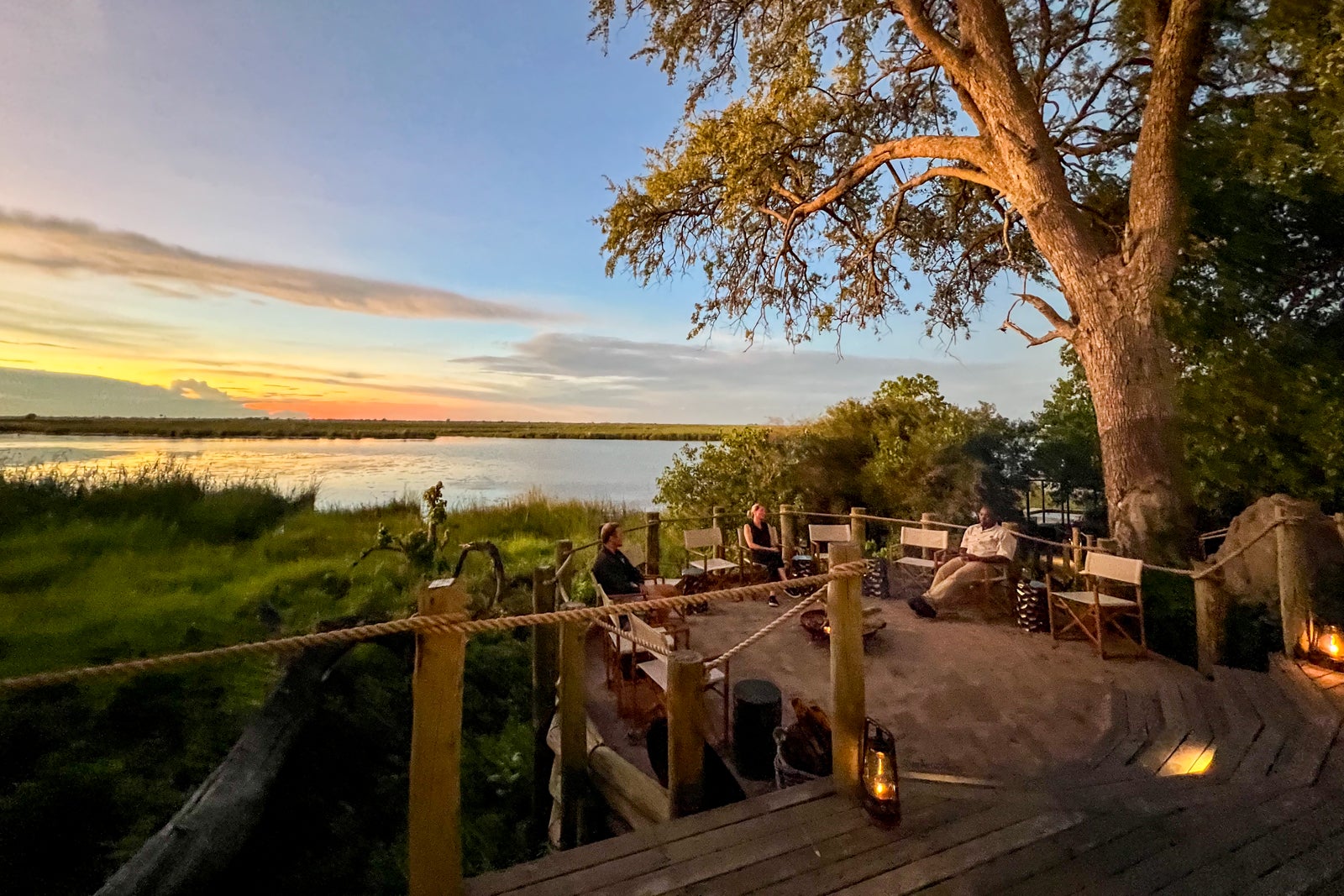
That's the path that Oja himself took. He has since worked as a guide not only at Little DumaTau, but also two other Wilderness camps, Vumbura Plains and Mombo.
Oja also views his continuing role as an ambassador for Children in the Wilderness as crucial to the work he does and the future of conservation. "It gives me a chance to meet with youngsters when we host them in our camps," Oja said, "and pass over the love of being a conservationist to the younger generation."
Minimize your footprint and maximize your impact
Aside from picking a safari company with sustainability efforts you want to support, there are a few things you can do as a traveler to make your safari adventure more sustainable.
Long flights produce a lot of carbon, so you could consider a carbon offsetting scheme to reduce the footprint from your journey to your safari destination.
Don't overpack since bush flights on small planes mean your luggage will be restricted anyway. What's more, many safari camps provide free daily laundry, so you don't have to bring too many outfits along. Plus, by limiting your luggage, you'll reduce the amount of fuel burned on the planes carrying you to your various camps.
Among those clothes, make sure you bring some made from fabric with sun protection factor. That will reduce the amount of plastic-packaged sunblock you need to bring along. Opt for mineral-based sunscreens (look for those labeled as "reef-safe") rather than conventional ones since the latter have chemicals that might be harmful to the environment as well as your own body chemistry, according to an increasing body of scientific evidence.
You might also want to leave your usual shampoo and conditioner at home since safari camps tend to provide eco-friendly, biodegradable products that are easier to manage waste-wise in the fragile ecosystems where they operate.
Finally, while safaris tend to be expensive, think about whether you can factor in a charitable donation to your budget. After all, if you've done your homework and picked a company with sustainability efforts you support, you might want to do just a little bit more good during your trip by making an unrestricted donation to the measures the group has underway.
Sustainable Safari

Top ways to experience nearby attractions

Most Recent: Reviews ordered by most recent publish date in descending order.
Detailed Reviews: Reviews ordered by recency and descriptiveness of user-identified themes such as waiting time, length of visit, general tips, and location information.
Sustainable Safari - All You Need to Know BEFORE You Go (2024)
- Sun - Sun 12:00 p.m. - 6:00 p.m.
- Mon - Sat 11:00 a.m. - 7:00 p.m.
- (0.75 km) Emerald Inn
- (12.24 km) Historic District BnB
- (6.76 km) Best Western Plus White Bear Country Inn
- (11.10 km) The Saint Paul Hotel
- (10.70 km) Celeste St Paul
- (0.05 km) Sweet & Sour Taqueria
- (0.05 km) Charleys Cheesesteaks
- (0.11 km) Cinnabon
- (0.10 km) Charley's Grilled Subs
- (0.10 km) Panda Express
- (0.08 km) Tactical Escape 101- Maplewood Mall
- (0.52 km) Myth
- (0.10 km) JCPenney
- (0.10 km) At The Pier Arcade
- (0.16 km) Kohl's
- Search Please fill out this field.
- Manage Your Subscription
- Give a Gift Subscription
- Sweepstakes
- Hotels + Resorts
This 7-night Safari in Botswana Is All About Wildlife, Water, and Sustainability — Here's What It Was Like to Visit
The Okavango Delta creates a safari landscape like no other.
:max_bytes(150000):strip_icc():format(webp)/StefanieWaldek-38071ba574ea46c2ac94e15fa18dc581.jpg)
Courtesy of Wilderness Safaris
Less than an hour after landing at a remote airstrip, we're having sundowners en route to the lodge. A troop of dozens — perhaps a hundred — baboons returns to the trees around us to roost for the night. A nosy kudu slowly circles our makeshift camp. Chatty squirrels chitter away in the branches above our heads. We sip our gin and tonics and watch as the Okavango Delta settles into dusk. So it goes on safari in Botswana.
We hop back into the jeep and make for Vumbura Plains, our home for the next few nights, passing elephants under trees and lechwe antelope spread across the flooded plains. But interestingly, it's not the wildlife that captivates me on the ride. It's the water.
The Okavango Delta is a sprawling inland delta, and each winter, floodwaters from the Okavango River inundate some three million acres of grassland and desert. It creates a vast waterscape that not only draws human visitors like me but plenty of animal ones, too. So as we're driving to the lodge, my heart stops as the road disappears into the waters — and I hold my breath as we plunge right in. "You might want to pick up that bag," our Wilderness guide Dave Luck says to me as the water gurgles beneath the floor of the jeep, seeping in through the crevices.
The floodwaters aren't very deep, though, and the local guides know where the roads twist and turn, even if I can't see anything through the murk. It's a surreal feeling to be navigating these waters in a jeep rather than on a boat.
We arrive at Vumbura Plains , and there's plenty more water to be found here. The camp was newly rebuilt in 2022 and now has a series of 14 open-air suites connected by elevated wooden walkways. I sit in my sunken living room adorned with water-lily motifs, and even though it's after dark, I can hear wildlife wading through the water all around me.
The water remains a source of intrigue for me during our stay at Vumbura Plains, perhaps even more so as we take to the skies in a helicopter. From our aerial vantage point, I can see just how expansive the floodwaters are — and how filled they are with wildlife. Water-loving hippos and crocodiles are spread across the saturated plains, while elephants march single-file through the reeds, creating meandering pathways visible from the air.
Our next adventure takes us away from the floods, in the Linyanti Concession, where the eight-room DumaTau camp becomes our next home. There is water here, too, as the lodge sits on a riverfront that's very popular with elephants. In fact, one waltzes right past my tented suite as I'm reclining for an afternoon nap.
On one of our game drives across the dry terrain, we see dozens of vultures perched on every tree within eyesight. And that means one thing: dinner is served. (Not ours, of course, but lions'.)
As we make our way through the tall, rustling grass, we spot a few lounging lionesses and their playful cubs. Then the smell hits us: it's a slightly putrid buffalo, one that the lions have been feasting on for some time. One lioness is polishing off its exposed ribs, her strong teeth tearing into the flesh and peeling it straight off the bone. Dave hands me a small tin filled with a fragrant salve. "For the smell," he notes, rubbing some under his nose. The trick works wonders, and we continue our observations of the feast.
You might think such a sight (and odor) might deter us from our own dinner back at DumaTau, but the cuisine at this camp is too delectable to pass up. The food system, as the printed menu tells me, is responsible for some 30 percent of global greenhouse gas emissions. So Wilderness designs "mindful menus" here, incorporating locally sourced, sustainable ingredients into its dishes to reduce its "foodprint." What's more, food waste is minimized by the kitchen's upcycling team, which turns scraps into preserves, pickles, and stocks. Nothing goes to waste in nature, and so it shall be at Wilderness camps, too.
Our final leg of the safari takes us back to the Okavango Delta, this time to the camp Jao. And here, I'm awestruck at the architecture. Jao feels like a movie set. It's a series of striking, modern tree houses that blend natural elements with high design and sustainable engineering. (The thatch, for instance, is actually made from recycled plastic.)
The room that really takes my breath away is the double-height library and wine room, at the center of which is a giraffe skeleton. Jao is equal parts futuristic and classic safari, and it's certainly a feast for the eyes.
We return to watery adventures in the delta, but not in jeeps. One afternoon, we take a more traditional form of transportation: a hand-carved mokoro canoe. Skilled gondoliers use long poles to propel us through the floodwaters, pausing at points to teach us about the flora of the region. We make necklaces out of water lilies and wear them proudly as we glide through the reeds.
On our last night in Botswana, the staff prepares us a beautiful sundowner send-off — a massive spread arranged on my suite's terrace surrounding a fire pit. As we watch the light fade over the water, we once more sip on our gin and tonics, the sights and sounds of our trip shining brightly in our memories.
A seven-night, three-camp Bucket List Botswana safari with Wilderness starts at $12,120 per person; book your trip at wildernessdestinations.com .
Sustainable Safari

Top ways to experience nearby attractions

Most Recent: Reviews ordered by most recent publish date in descending order.
Detailed Reviews: Reviews ordered by recency and descriptiveness of user-identified themes such as waiting time, length of visit, general tips, and location information.
Sustainable Safari - All You Need to Know BEFORE You Go (2024)
- Sun - Sun 12:00 pm - 6:00 pm
- Mon - Sat 11:00 am - 7:00 pm
- (0.75 km) Emerald Inn
- (12.24 km) Historic District BnB
- (6.76 km) Best Western Plus White Bear Country Inn
- (11.10 km) The Saint Paul Hotel
- (10.70 km) Celeste St Paul
- (0.05 km) Sweet & Sour Taqueria
- (0.05 km) Charleys Cheesesteaks
- (0.11 km) Cinnabon
- (0.10 km) Charley's Grilled Subs
- (0.10 km) Panda Express
- (0.08 km) Tactical Escape 101- Maplewood Mall
- (0.52 km) Myth
- (0.10 km) JCPenney
- (0.10 km) At The Pier Arcade
- (0.16 km) Kohl's
Watch CBS News
Sen. Tammy Duckworth calls for FAA review of Boeing's failure to disclose 737 Max flight deck features to pilots
By Kris Van Cleave
Updated on: April 4, 2024 / 4:21 PM EDT / CBS News
Senator Tammy Duckworth is urging the Federal Aviation Administration to take a closer look at how it responds to what she says is a pattern by Boeing of failing to disclose flight deck features of the 737 Max to pilots, according to a letter to be sent Thursday and obtained exclusively by CBS News.
Duckworth, Democrat of Illinois and chair of the Senate's Aviation Safety, Operations and Innovation Subcommittee, is calling on FAA Administrator Michael Whitaker to investigate why Alaska Airlines pilots were unaware the plane's cockpit door was designed to automatically open during a rapid depressurization — which is exactly what occurred on flight AS1282 when a door panel on a Boeing 737 Max 9 blew out mid-flight in early January.
"Boeing's failure to disclose this feature is chilling given its history of concealing 737 MAX information from pilots," Duckworth writes.
National Transportation Safety Board Chair Jennifer Homendy told reporters following a Senate Commerce Committee hearing on January 17 that the flight crew should have been told about the feature. "Nobody knew about it. So it was a complete surprise. And the flight crew needs to know," she said, adding, "knowing this could occur is pretty key to safety."
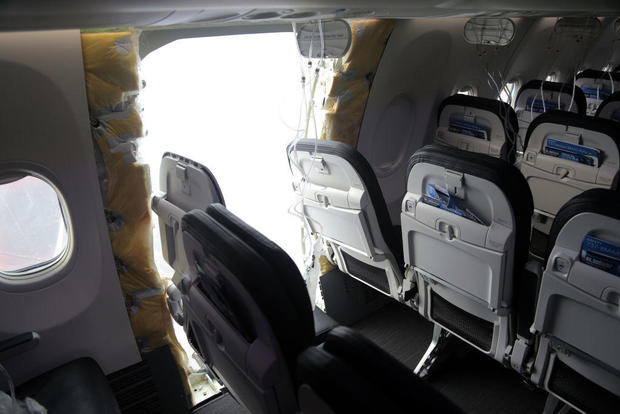
Following the January 5 incident with the door panel, Boeing updated the Flight Crew Operating Manual to include that the cockpit door opens in order to equalize pressure between the flight deck and cabin in the event of a rapid depressurization of the passenger cabin.
" We agree with Senator Duckworth. As a fellow pilot, she understands the importance of informing pilots about safety critical designs and systems." said 737 Captain Dennis Tajer, a spokesman for the Allied Pilot Association, which represents American Airlines pilots. "This nondisclosure of the cockpit door design just adds to Boeing's rap sheet of withholding information from pilots. The FAA has got to stop this bad behavior before tragedy strikes, again."
But NTSB investigators say it was not only the pilots of Alaska Airlines flight 1282 who were unaware of the cockpit door design to swing open during a depressurization. It caught the flight attendants off guard as well as they were responding to the emergency in the cabin.
"When safety culture is broken down and the expediency of shoveling profits to Wall Street becomes the mission — this is what you get. It's not okay. It's not sustainable," Sara Nelson, president of the Association of Flight Attendants-CWA, representing 50,000 flight attendants at 19 airlines including Alaska Airlines, told CBS News. "And we as a nation cannot allow this great American company to be torched by shareholder capitalism. We stand with the workers trying right now to take back the company they built."
In her letter, Duckworth says the FAA needs to consider if any changes are required to the cockpit of the 737 in light of the door's design and that the regulator may need to consider taking action against the company.
"This unknown, undisclosed feature resulted in the flight crew being surprised when the rapid depressurization event caused the cockpit door to slam open, sucking an emergency checklist out of the cockpit and removing one of the pilots' headsets," writes Duckworth. "As a pilot, I cannot convey strongly enough how critical it is for the flight crew to be fully informed of all features on the flight deck. Keeping pilots in the dark about features on the MAX has become a pattern at Boeing. This is the third time Boeing has failed to disclose a flight deck feature to 737 MAX pilots. This is dangerous, and FAA must not view this latest omission in isolation. Instead, FAA should consider regulatory action informed by Boeing's past pattern of deceptive conduct."

Duckworth points to Boeing's decision not to include the Maneuvering Characteristics Augmentation System, or MCAS, in the flight manual for the 737 Max and its failure to inform pilots that the Angle of Attack (AOA) disagree alert aboard most Max 8 airliners was not functional. It was a design flaw with the MCAS system that led to the two deadly 737 Max 8 crashes that killed 346 people , and the AOA issue that was not disclosed until after the second Max 8 crash. The AOA sensor was a factor in both crashes.
"While this was not a safety-critical feature, the manufacturer's brazen disregard for type design requirements and lack of candor with pilots is breathtaking," writes Duckworth. "Even more disturbing is FAA's failure to consider any kind of civil enforcement action. If Boeing faces no consequence from FAA when it engages in outrageously inappropriate conduct like this—what incentive does the company have to change its behavior?"
Boeing said in a statement to CBS News late Wednesday that it is "committed to continued transparency and sharing information with our regulator and operators."
In recent weeks, Duckworth has called on the FAA to deny Boeing a key safety waiver for the 737 Max 7 and Max 10 that would have allowed the planes to be certified for use despite an issue with the anti-icing system found on all Max engines. Boeing withdrew the request following her letter to the FAA and pledged not to seek certification of either airliner until a fix was developed . Those delays have resulted in key Boeing customer Southwest Airlines cutting its capacity of planes for 2024 and United pausing pilot hiring and encouraging some of its existing pilots to take unpaid leave as both carriers will receive fewer airplanes than expected.
— Katie Krupnik contributed reporting.
- Boeing 737 Max
- Tammy Duckworth

Kris Van Cleave is CBS News' senior transportation and national correspondent based in Phoenix.
More from CBS News

CPD and feds meet to discuss Chicago's security plans for DNC

Students study to become CPD officer in 1-year City Colleges program

Rain, snow showers to persist in Chicago overnight
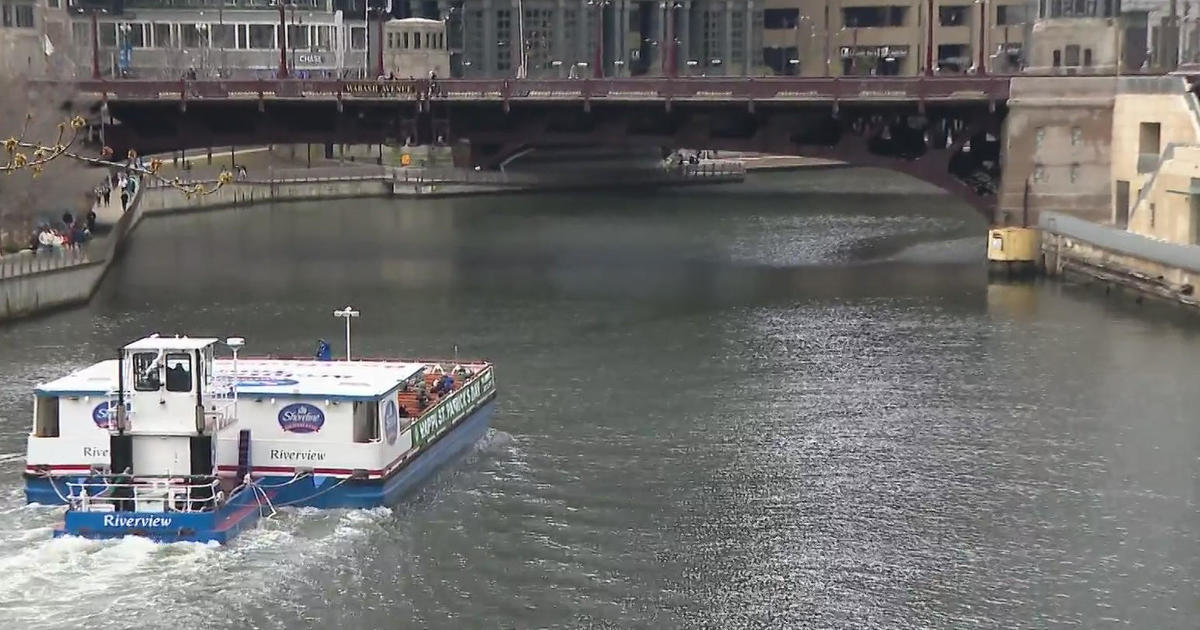
Chicago River open-water swim to be held for first time in nearly 100 years
Connect Socal
Scag regional council approves connect socal 2024, southern california’s regional plan.
The Southern California Association of Governments (SCAG) Regional Council on Thursday formally adopted the Connect SoCal 2024 Regional Transportation Plan/Sustainable Communities Strategy, a long-term vision to balance future mobility and housing needs with economic and environmental goals over the next 25 years.
If fully implemented, Connect SoCal 2024 would reduce traffic congestion, improve air quality and improve the region’s long-term economic viability through more than $751 billion in transportation investments and a more sustainable regional development pattern. Notable in this plan update are new strategies for addressing the housing crisis, adapting to climate change and investing in underserved communities.
“Connect SoCal 2024 represents a significant milestone in meeting the mobility and quality-of-life needs of one of the most vibrant population centers in the United States,” said Art Brown, SCAG’s Regional Council president and Buena Park mayor. “With this plan, we have integrated creative strategies to address our regional transportation challenges while creating opportunities for economic prosperity, meeting our growth needs and safeguarding public health.”
As the metropolitan planning organization for six counties and 191 cities, SCAG is mandated by state and federal law to develop a long-term regional transportation plan and sustainable communities strategy every four years. SCAG led an extensive planning and visioning process in developing Connect SoCal 2024, including meetings with 164 jurisdictions in the region to review their growth forecasts, an extensive public outreach process, and policy discussions with elected leaders from around the region. The plan identifies a series of outcomes including increased transit ridership; an emphasis on Priority Development Areas that bring housing, jobs and mobility options closer together; safe and efficient goods movement; and streets that prioritize people and safety.
The plan also encompasses more than 2,000 local projects, including those identified and submitted by six county transportation commissions across the region. These projects are funded by a combination of federal, state and local dollars, and their inclusion in the plan allows them to advance under federal and state regulations.
Performance measurement data included in the draft Connect SoCal 2024 shows that, if fully implemented, the plan could result in:
- A 11.6% reduction in overall vehicle miles traveled among passenger vehicles (from 2019).
- A 31.8% reduction in minutes of daily traffic delay per person (from 2019).
- Achievement of the region’s targets for reducing greenhouse gases from autos and light-duty trucks by 19% per capita, from 2005 levels, by 2035.
- 465,000 new jobs supported by transportation investments or improved competitiveness each year.
- An overall return on investment of $2 for every $1 spent.
Of the $751.7 billion in investments identified in the plan, $303.3 billion is specific to transit projects and operations, $75.4 billion is specific to state highway operations and maintenance, $62.6 billion is specific to goods movement and $38 billion is specific to active transportation. However, the plan also identifies challenges in funding the maintenance and operations needs of the current transportation system, and the need for innovation to transition to more sustainable funding mechanisms.
“As we shift to a zero-emission transportation system, transportation revenue sources dependent on fuel taxes will continue to decline,” Ajise said. “SCAG will collaborate with federal, state and local partners to leverage existing revenue sources, explore innovative funding and financing mechanisms, and advocate for increased investment in the region’s infrastructure needs.”
Connect SoCal 2024 also is the most pro-housing regional transportation plan produced by SCAG to date and includes a standalone Housing Technical Report highlighting the challenges to housing production and best practices for implementation by jurisdictions.
The plan projects Southern California will add more than 2.1 million people by 2050 to reach 20.9 million, an 11.1% increase. The number of jobs is expected to increase by 1.3 million, or 14.5%.
For more on Connect SoCal, visit the Connect SoCal 2024 website .
- Request new password
- Support portal

IMAGES
COMMENTS
11 reviews. #7 of 20 things to do in Maplewood. Zoos. Closed now. 11:00 AM - 7:00 PM. Write a review. About. Sustainable Safari is the most interactive Zoo in MN. Guest are able to pet and feed almost all of our animals such as: Kangaroo's, Wallaby's, Coatimundi's, Capybara's, Royal Yak, Emu's, Armadillo's, Greater Grison, American Bader, lots ...
22 reviews and 100 photos of Sustainable Safari "Totally recommend taking your family here to pet all the different animals that you are able to pet like kangaroo, turtles, lamas, lizards, goats, bunnies, etc. So much more to see like porcupine, leanmer, skunk, alligators, hedgehog, badgers, miniature deers, baby white tailed deer, etc. Husband said the variety is endless and it's worth the money.
About. Sustainable Safari is the most interactive Zoo in MN. Guest are able to pet and feed almost all of our animals such as: Kangaroo's, Wallaby's, Coatimundi's, Capybara's, Royal Yak, Emu's, Armadillo's, Greater Grison, American Bader, lots of goats and much more. If you are interested in a closer animal experience, for an additional fee ...
Sustainable Safari. 11 Reviews. #7 of 20 things to do in Maplewood. Nature & Parks, Outdoor Activities, Zoos & Aquariums. 3001 White Bear Ave N, Upper Level, Maplewood Mall, Maplewood, MN 55109-1215. Open today: 11:00 AM - 7:00 PM.
Review of Sustainable Safari. Reviewed August 22, 2023 via mobile . What a great place. Friendly, informative staff willing to help at any time. Lots of fun animals to pet, feed, and hold. Little kids will marvel at the variety and opportunities to interact with the animals. A must-see if you have kids… but even adults will enjoy this.
Take a journey into Sustainable Safari®! Located at the Maplewood Mall, we have 200+ animals to feed and interact with. Book a private tour! ... Safari Reviews. Reviews below are from the Sustainable Safari® Google Business profile! More Google Reviews > "Incredible experience!! For $16 a person we weren't expecting much but holy cow they ...
SEA LIFE Aquarium Minnesota Admission Ticket at Mall of America. ₱1,792.81. All Inclusive 3hr Craft Brewery Tour. 98% of travelers recommend this experience. This number is based on the percentage of all Tripadvisor reviews for this product that have a bubble rating of 4 or higher.
Mar 14, 2024 - Sustainable Safari is the most interactive Zoo in MN. Guest are able to pet and feed almost all of our animals such as: Kangaroo's, Wallaby's, Coatimundi's, Capybara's, Royal Yak, Emu's, Armadillo'...
They have over 200 animals to feed and pet. Admission is $16.50 and includes a $2.00 feed cup and ALL-DAY Safari entry. Kids 4 and under are FREE! (Seniors, military, first responders and educators get $2.00 off.) They also have other experiences you can add on - where you can interact more with the animals.
It's an easy drive to the Maplewood Mall. For easiest access, park in the upper lot near Kohl's and use Door 2 for entry. Sitting in the aviary feeding parakeets at Sustainable Safari. Once inside, Sustainable Safari is on the second level in a corner storefront. My best advice is to get there when it opens, or wait about two and a half ...
Sustainable Safari is the place to go if you want to smell an anteater. Or stroke the downy fur on a baby kangaroo's head. ... "We'll get a bad review every once in a while," Pilz said. "That ...
Sustainable Safari. Sustainable Safari is the most interactive Zoo in MN. Guest are able to pet and feed almost all of our animals such as: Kangaroo's, Wallaby's, Coatimundi's, Capybara's, Royal Yak, Emu's, Armadillo's, Greater Grison, American Bader, lots of goats and much more. If you are interested in a closer animal experience, for an ...
Sustainable Safari, Maplewood, Minnesota. 18,164 likes · 611 talking about this · 7,415 were here. Sustainable Safari is family-owned and works to educate the public through safe animal encounters.
Sustainable Safari: Wonderful Experience - See 7 traveler reviews, 53 candid photos, and great deals for Maplewood, MN, at Tripadvisor.
Review. Trips Alerts Sign in. Basket. Maplewood. Maplewood Tourism Maplewood Hotels Maplewood Bed and Breakfast Maplewood Holiday Rentals Flights to Maplewood Maplewood Restaurants Maplewood Attractions Maplewood Travel Forum Maplewood Pictures Maplewood Map Maplewood Guide.
4. Minimize Plastic Waste. In a sustainable safari, minimizing plastic waste is essential to protecting the jungle's pristine environment. Take reusable water bottles and avoid single-use plastic items like straws and bags. Choose eco-friendly toiletries and personal care products with biodegradable packaging.
A safari trip can also be the opportunity to make sustainable, responsible choices about how and where you travel, and to maximize the impact your travel spending has on conservation, community and environmental programs in various destinations. Safaris are about more than luxury tents and thrilling game drives at Wilderness' Mombo Camp.
About. Sustainable Safari is the most interactive Zoo in MN. Guest are able to pet and feed almost all of our animals such as: Kangaroo's, Wallaby's, Coatimundi's, Capybara's, Royal Yak, Emu's, Armadillo's, Greater Grison, American Bader, lots of goats and much more. If you are interested in a closer animal experience, for an additional fee ...
As we watch the light fade over the water, we once more sip on our gin and tonics, the sights and sounds of our trip shining brightly in our memories. A seven-night, three-camp Bucket List ...
11:00 AM - 7:00 PM. 12:00 PM - 6:00 PM. Write a review. About. Sustainable Safari is the most interactive Zoo in MN. Guest are able to pet and feed almost all of our animals such as: Kangaroo's, Wallaby's, Coatimundi's, Capybara's, Royal Yak, Emu's, Armadillo's, Greater Grison, American Bader, lots of goats and much more.
Glassdoor gives you an inside look at what it's like to work at Sustainable Safari, including salaries, reviews, office photos, and more. This is the Sustainable Safari company profile. All content is posted anonymously by employees working at Sustainable Safari.
Safari Bob and his team were top notch - Review of Sustainable Safari, Maplewood, MN - Tripadvisor. Sustainable Safari. 11 Reviews. #7 of 20 things to do in Maplewood. Zoos & Aquariums, Nature & Parks, Outdoor Activities. 3001 White Bear Ave N, Upper Level, Maplewood Mall, Maplewood, MN 55109-1215. Open today: 11:00 AM - 7:00 PM.
Duckworth calls for FAA review of Boeing's 737 Max disclosures 03:42. Senator Tammy Duckworth is urging the Federal Aviation Administration to take a closer look at how it responds to what she ...
Sound could help to avert human-elephant conflict in India. Marine biologist Dr. Austin Gallagher leads an expedition to the Bahamas to learn more about sharks and turtles.
If you care about animals, don't go - Review of Sustainable Safari, Maplewood, MN - Tripadvisor. Sustainable Safari. 11 Reviews. #7 of 20. Outdoor Activities, Zoos & Aquariums, Nature & Parks. 3001 White Bear Ave N, Upper Level, Maplewood Mall, Maplewood, MN 55109-1215. Open today: 12:00 PM - 6:00 PM.
The Southern California Association of Governments (SCAG) Regional Council on Thursday formally adopted the Connect SoCal 2024 Regional Transportation Plan/Sustainable Communities Strategy, a long-term vision to balance future mobility and housing needs with economic and environmental goals over the next 25 years.
Sustainable Safari: Very sad place - See 10 traveler reviews, 95 candid photos, and great deals for Maplewood, MN, at Tripadvisor.